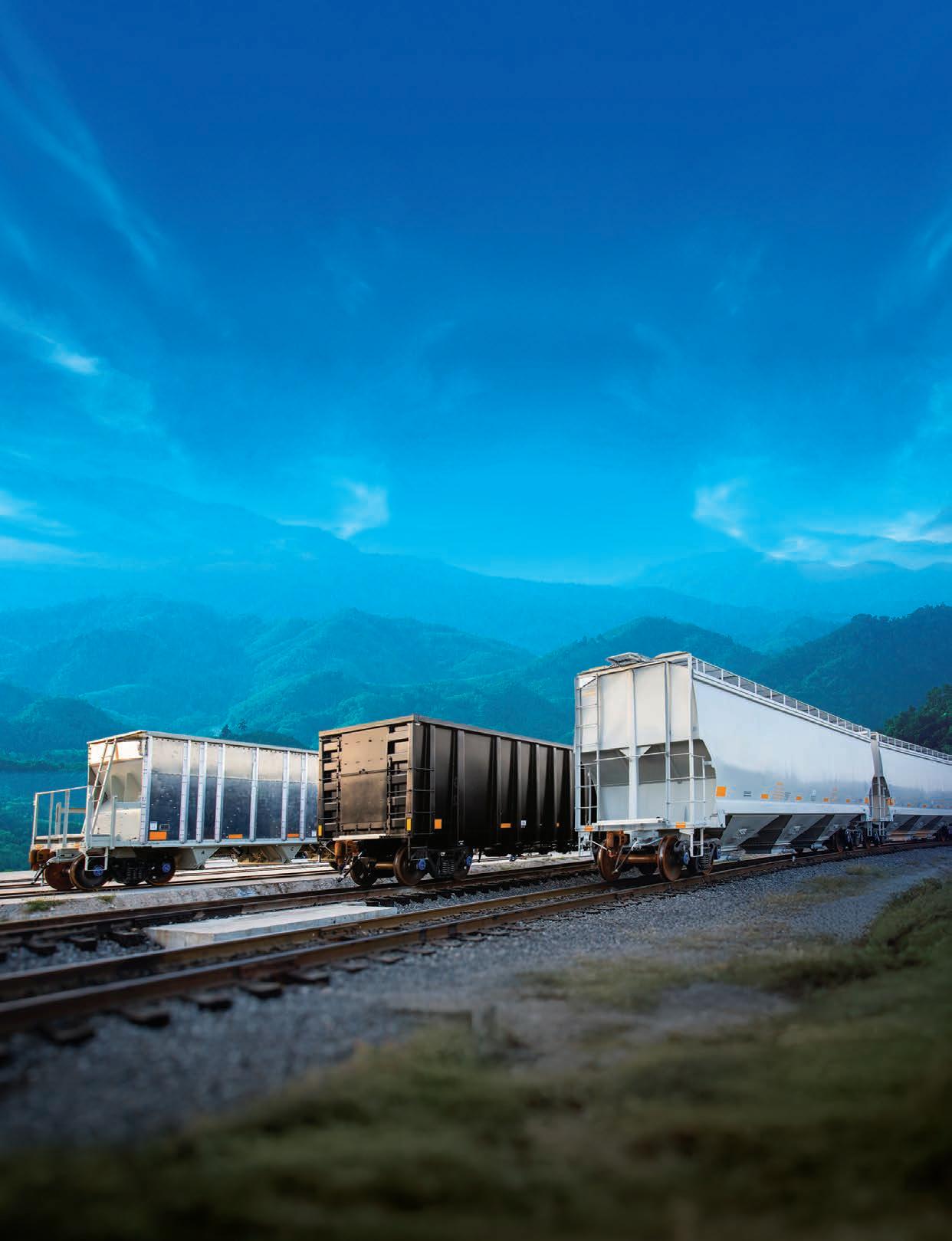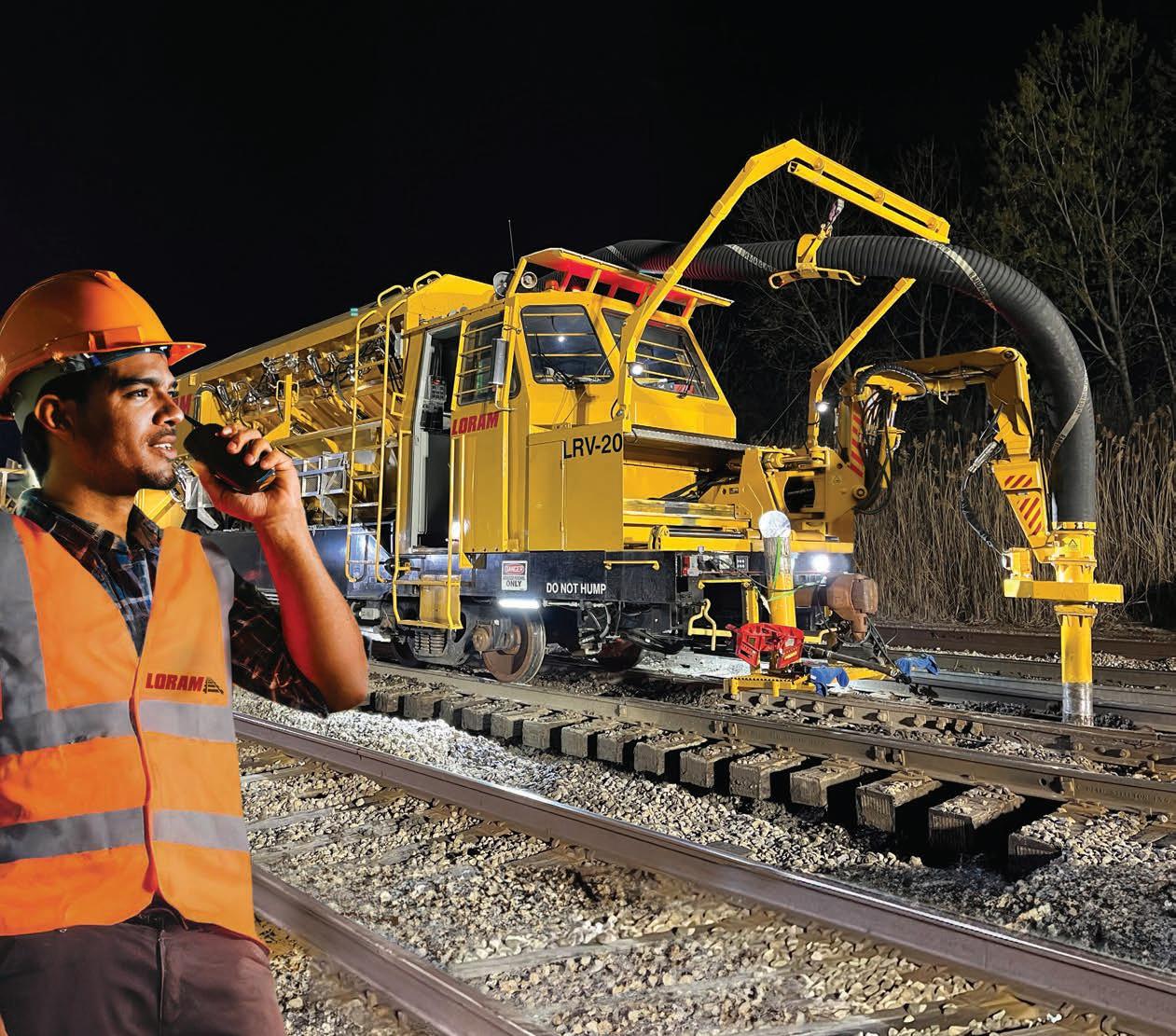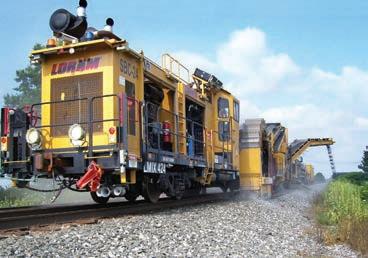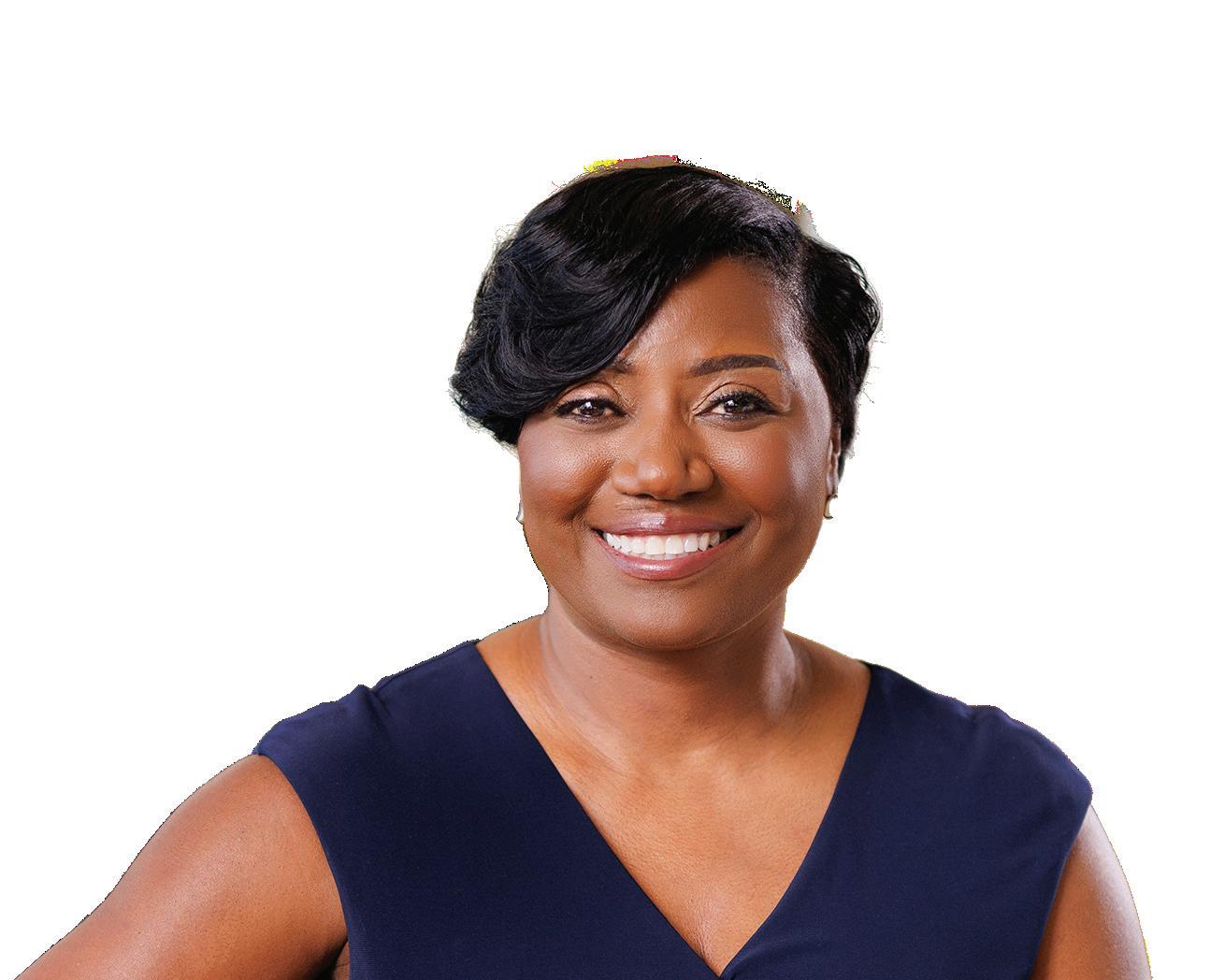
PASSENGER RAIL FOCUS
Hydrogen Power Has Arrived
TECH FOCUS – M/W
Ballast Best Practices
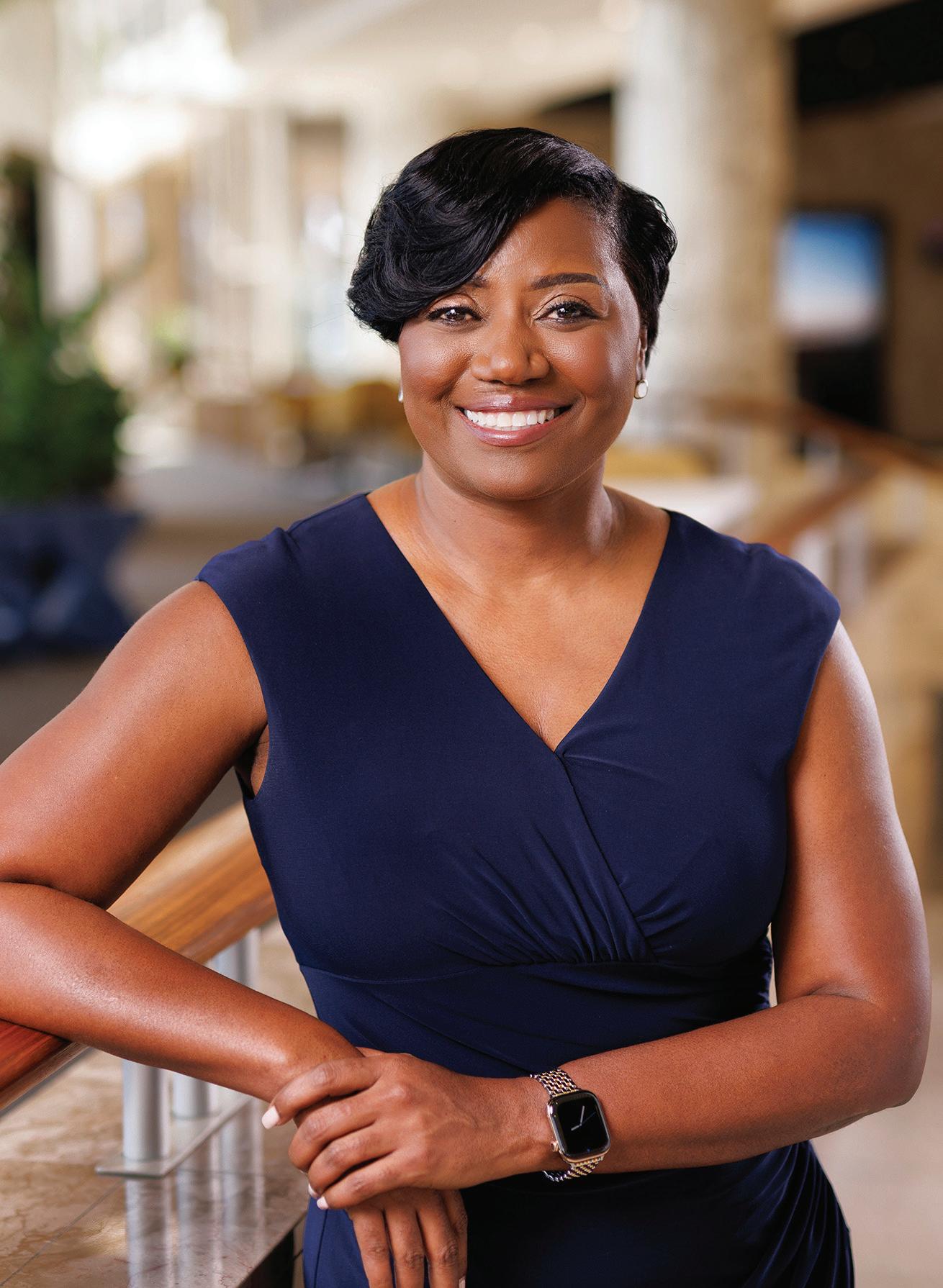
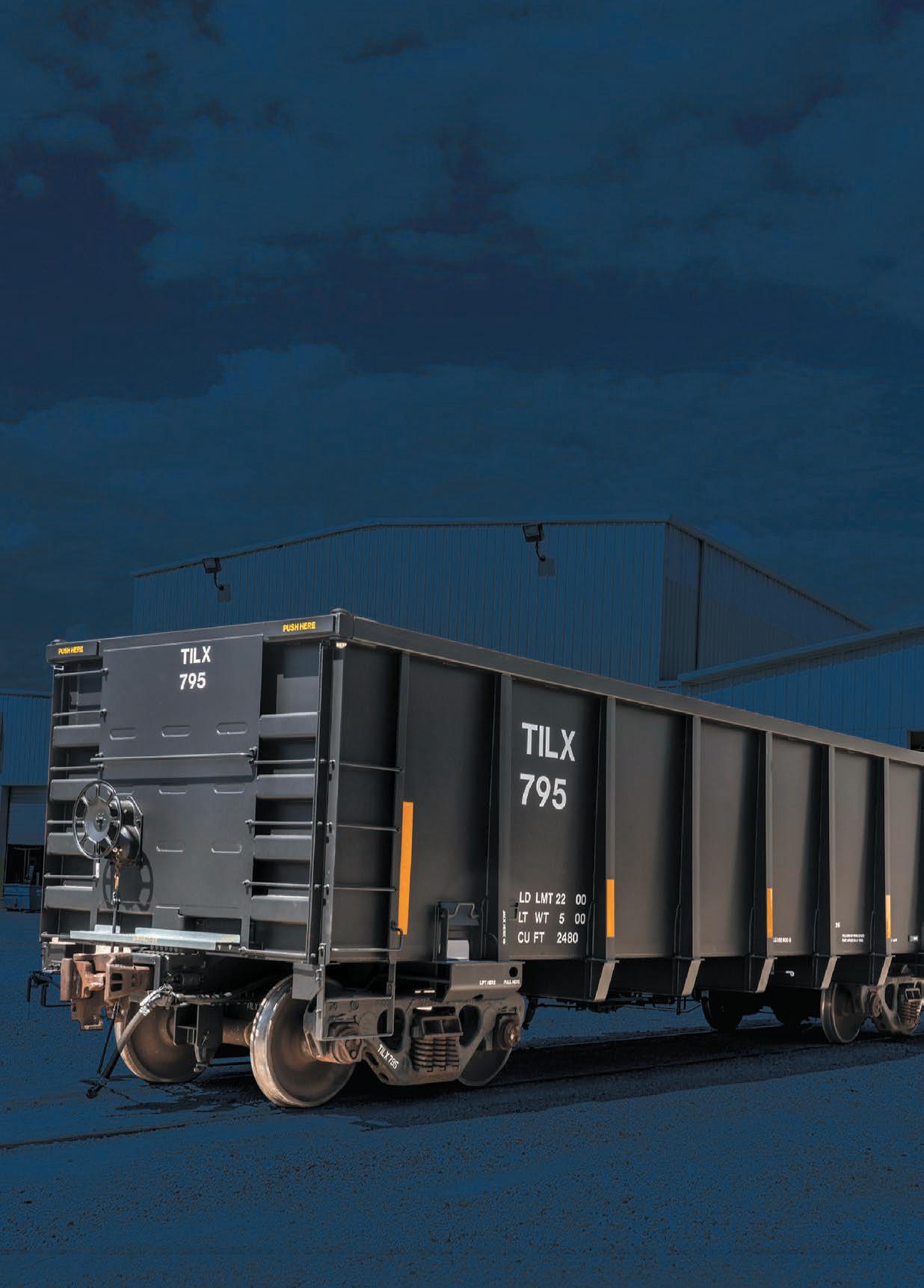



Hydrogen Power Has Arrived
TECH FOCUS – M/W
Ballast Best Practices






At this writing in late October, we are nearly five months out from our annual NextGeneration Freight Rail (“NGFR”) Conference, slated for March 10, 2026, at the Union League Club of Chicago. Start making plans early to come to Chicago, because I don’t think you’re going to want to miss this one.
By the time we convene early that Tuesday morning, the Union Pacific-Norfolk Southern merger application will have been under evaluation with the Surface Transportation Board roughly three months. We’ve already seen a trainload of opinions, commentary and questions, flavored by quite a bit of agita.
“To be more clearly defined are ‘procompetitive’; ‘downstream effects’; ‘common carrier obligation’; ‘public interest’; and how competitive ‘balance’ is preserved absent a second transcontinental marriage,” Capitol Hill Contributing Editor Frank N. Wilner notes in this issue’s “Watching Washington” (p. 10). “To assure confidence in the merger review process, there must be clear understanding of regulatory tools available to repair post-merger service failures, preserve major gateways (points allowing traffic interchange with other railroads), and to police rate increases by revenue adequate railroads. Shippers should know how their rate reasonableness challenges will be handled post-merger, and if reciprocal switching can be made an effective pro-competitive remedy, especially absent a third rail competitor.”
And you thought this was going to be simple? Seamless? No such luck!
History is littered with Class I mergers
that have caused major delays, congestion, service breakdowns, IT integration problems—what shippers have referred to as “chaos.” Besides better planning—the easy, general and obvious answer—what specific things are in the works to prevent the inevitable hiccups in this transcontinental combo from turning into chronic acid reflux?
As well, thoughtful CEOs will point out that successful mergers are based on two organizational principles: culture and collaboration. How will UP and NS present the merger’s organizational objectives to the people at each company who may be interpreting C-Suite public remarks differently? What concessions are they willing to make (and—let’s be realistic—they will have to make at least some) to obtain STB approval?
These are all fair questions. Who is willing to answer them? We know it’s people like Jim Vena and Mark George (for starters), Keith Creel, Tracy Robinson, Patrick Fuchs and Michelle Schultz. They, among others, are all on the NGFR agenda, engaging in discussions with me, our staff editors, and Contributing Editors Jason Seidl and David Nahass. We’ll take as many questions as we can handle, so be prepared.
NGFR traditionally concludes with Railway Age’s Railroader of the Year, just before the Western Railway Club Dinner. Our 2026 honoree is one of the all-time best, most highly respected operating people in the business: Norfolk Southern Executive Vice President and Chief Operating Officer John Orr—the obvious choice, in my humble opinion.

WILLIAM C. VANTUONO Editor-in-Chief
Railway Age, USPS 449-130 (ISSN 0033-8826), is published monthly with a special C&S Buyers Guide issue in December by the Simmons-Boardman Publishing Corporation, 1809 Capitol Avenue, Omaha, NE 68102-4905. Tel. (212) 620-7200. Periodicals postage paid at Omaha NE and additional mailing offices.
Subscriptions: Qualified individuals in the railway industry may request a complimentary subscription. All other subscriptions: US/Canada/Mexico; $100.00 per year. Rest of World $139.00 per year. Single copies $36.00 per issue. For Subscriptions & address changes, please call (US, Canada & International) +1-847-559-7372, Fax +1 (847) 291-4816, e-mail railwayage@omeda.com or write to: PO Box 239, Lincolnshire IL 60069-0239 USA.
COPYRIGHT© 2025 Simmons-Boardman Publishing Corporation. All rights reserved. Contents may not be reproduced without permission. For reprint information contact PARS International Corp., 102 W. 38th Street, 6th floor, New York, NY 10018, Tel.: 212-221-9595; Fax: 212-221-9195.
POSTMASTER: Send address changes to Railway Age, PO Box 239, Lincolnshire IL 60069-0239 USA
SUBSCRIPTIONS: 847-559-7372
EDITORIAL AND EXECUTIVE OFFICES
Simmons-Boardman Publishing Corp. 1809 Capitol Avenue Omaha, NE 68102 (212) 620-7200 www.railwayage.com
ARTHUR J. McGINNIS, Jr. President and Chairman
JONATHAN CHALON Publisher jchalon@sbpub.com
WILLIAM C. VANTUONO Editor-in-Chief wvantuono@sbpub.com
MARYBETH LUCZAK Executive Editor mluczak@sbpub.com
CAROLINA WORRELL Senior Editor cworrell@sbpub.com
DAVID C. LESTER
Engineering Editor/Railway Track & Structures Editor-in-Chief dlester@sbpub.com
JENNIFER McLAWHORN
Managing Editor, RT&S jmclawhorn@sbpub.com
HEATHER ERVIN
Ports and Intermodal Editor/Marine Log Editor-in-Chief hervin@sbpub.com
Contributing
Editors
David Peter Alan, Jim Blaze, Nick Blenkey, Sonia Bot, Bob Cantwell, Dan Cupper, Alfred E. Fazio, Justin Franz, Gary Fry, Michael Iden, Don Itzkoff, Bruce Kelly, Pauline Lipkewich, Joanna Marsh, David Nahass, Jason Seidl, Ron Sucik, David Thomas, Frank N. Wilner
Art Director: Nicole D’Antona
Graphic Designer: Hillary Coleman
Corporate Production Director: Mary Conyers
Production Director: Eduardo Castaner
Marketing Director: Erica Hayes
Conference Director: Michelle Zolkos
Circulation Director: Joann Binz
INTERNATIONAL OFFICES
46 Killigrew Street, Falmouth, Cornwall TR11 3PP, United Kingdom 011-44-1326-313945
International Editors
Kevin Smith
ks@railjournal.com
David Briginshaw
db@railjournal.com
Robert Preston
rp@railjournal.com
Mark Simmons
msimmons@railjournal.com
CUSTOMER SERVICE: RAILWAYAGE@OMEDA.COM , OR CALL 847-559-7372
Reprints: PARS International Corp. 253 West 35th Street 7th Floor New York, NY 10001 212-221-9595; fax 212-221-9195 curt.ciesinski@parsintl.com
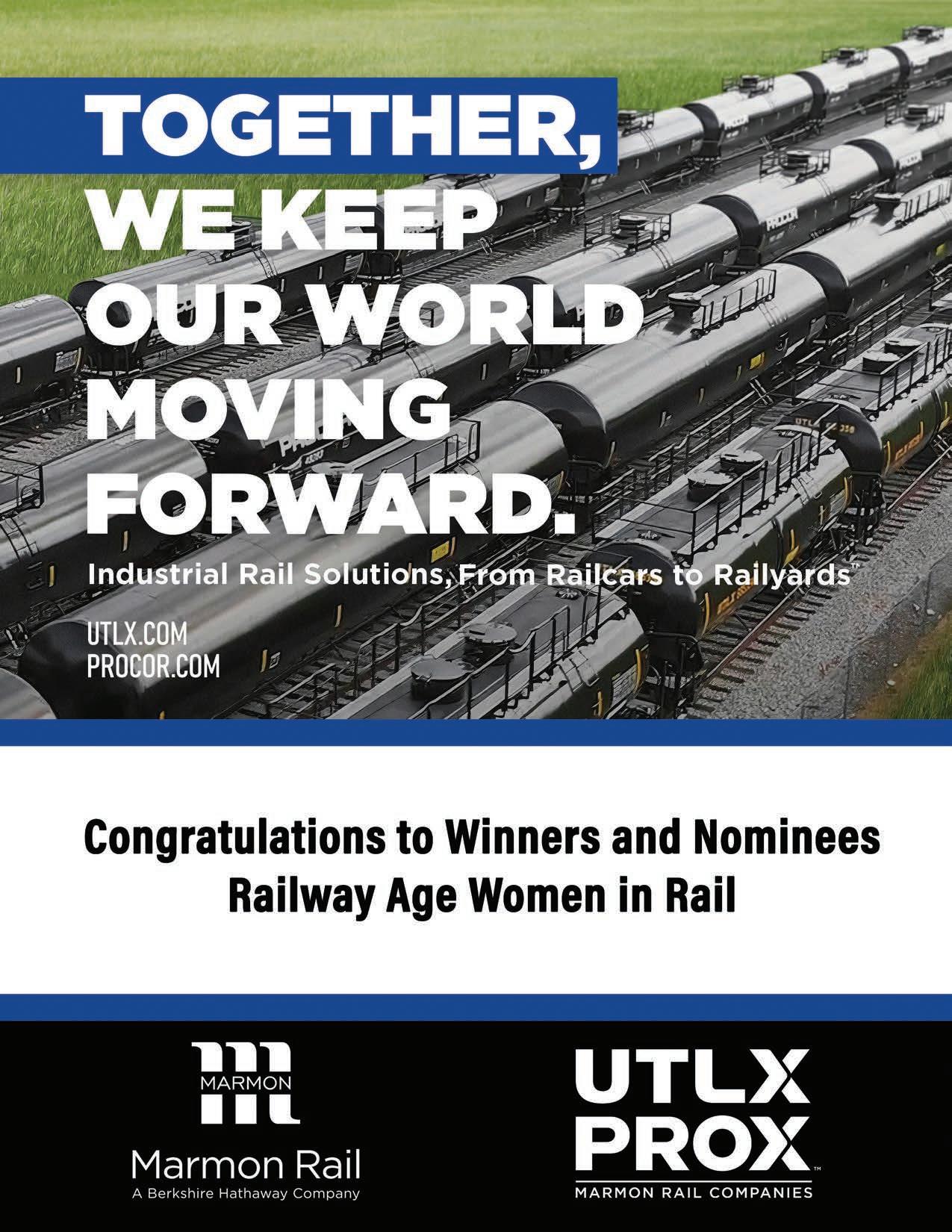

“September rail volumes reflect the uneven pace of the U.S. economy, with pockets of growth offset by emerging weaknesses,” the Association of American Railroads reported last month. “As businesses navigate ongoing uncertainty, rail activity has mirrored broader economic conditions—signaling cautious optimism but also persistent hesitation.
“Rail traffic volumes continue to adjust to evolving market conditions. In September 2025, total U.S. rail carloads fell 1.2% year-over-year, with 12 of the 20 major carload categories tracked by the AAR posting declines. However, several key industrial commodities—including metal products, autos and parts, metallic ores, and stone and glass products—saw gains.
“Total carloads averaged 225,783 per week in September, more than the weekly average for the first nine months of the year (221,853). Year-to-date total carloads through September were up 2.1%, or more than 180,000 carloads, over the same period in 2024. In 2025 through September, 12 of the 20 carload categories the AAR tracks saw year-overyear gains.
“U.S. intermodal rail shipments, which are closely tied to consumer demand and international trade, fell 1.3% in September 2025 from September 2024. Still, average weekly intermodal volume in September (275,559 containers and trailers) was well above the year-to-date weekly average of 271,121. Year-to-date intermodal volume through September was 10.57 million units—up 3.5% (362,000 units) over last year, the most since 2021, and the third-most ever.
“Historically, September and October are peak months for intermodal traffic, but performance this year hinges on several unpredictable factors, including global supply chain shifts and consumer-driven freight demand. To hedge against uncertainty, many businesses have front-loaded shipments ahead of the holiday season, which could impact intermodal volumes going forward.
“The AAR Freight Rail Index (FRI), combines seasonally adjusted rail intermodal shipments plus carloads excluding coal and grain. The index fell 0.8% in September 2025 from August 2025, its fifth decline in the past six months. Still, the index is only 1.0% below its level from a year earlier, indicating that recent weakness reflects a gradual adjustment rather than a sharp downturn.
“Uncertainty remains the dominant theme. Yet, rail volumes continue to show underlying resilience: Through September, total carloads were up 2.1% and intermodal volumes were up 3.5%, pointing to a steady demand across key supply chains. Even
so, mixed economic signals and the added complication of a government shutdown—temporarily disrupting key data flows—reinforce the need for caution as the year enters its final quarter.”

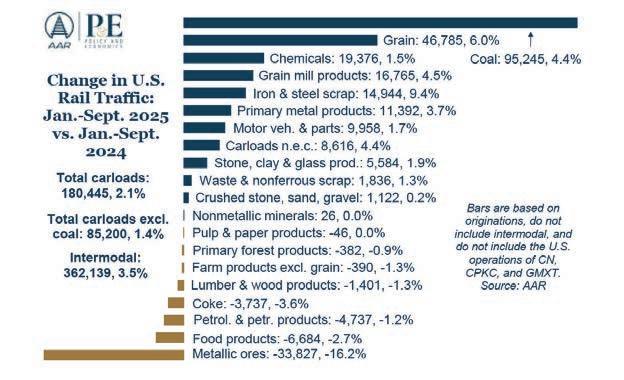

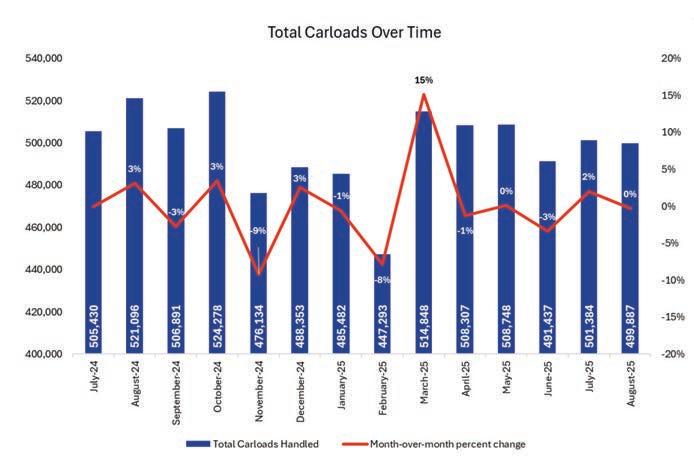



NATIONAL MEDIATION BOARD MEMBER DEIRDRE E. HAMILTON, A DEMOCRAT, WAS FIRED OCT. 14 BY POTUS 47, MAKING HER ONE OF MANY LEGALLY QUESTIONABLE INDEPENDENT REGULATORY AGENCY TERMINATIONS BY THE POTUS. HAMILTON’S DEPARTURE LEAVES THE THREE-MEMBER NMB WITH ONE REPUBLICAN (CHAIRPERSON LOREN E. SWEATT) AND ONE DEMOCRAT (LINDA PUCHALA).
Hamilton told Railway Age by phone Oct. 16 that she is exploring her legal options, as the firing—much as with that of Surface Transportation Board (STB) member and Democrat Robert E. Primus and Democratic members of the Federal Trade Commission (FTC) and National Labor Relations Board (NLRB)—are contrary to statute.
Although Hamilton’s term expired in June, the NMB’s statute provides that members may continue to serve beyond
term expiration until a successor is Senate-confirmed. (Note that the STB statute provides STB members may serve a maximum of 12 months following term expiration. Primus was in the midst of second term.)
Primus, as well as the FTC and NLRB Democrats terminated by POTUS 47, have filed separate lawsuits challenging their terminations. The FTC and NLRB Democrats were granted injunctive relief by a federal district court, nullifying their terminations, but the Supreme Court delayed the effectiveness of the lower court ruling pending further litigation—the law not settled as to court authority to order reinstatement.
The NMB is an independent (from Executive Branch) federal regulatory agency that administers the 1926 Railway Labor Act (RLA), which governs labor relations in the airline and railroad industries. It was created in 1934 by amendment to the RLA and its members are nominated by the
POTUS and confirmed by the Senate for three-year terms, with no limitation on the number that may be served. (STB, by contrast, limits members to two fiveyear terms.)
The NMB’s primary function is to minimize work stoppages through dispute resolution procedures such as mediation and arbitration. It also resolves union-representation disputes and maintains a list of qualified arbitrators from which a POTUS chooses for appointment to Presidential Emergency Boards that investigate and make nonbinding recommendations for dispute resolution following a collective bargaining impasse.
Unlike the STB, where the POTUS designates the chairperson, the NMB chairperson rotates annually. When reached by phone Oct. 16, NMB Chairperson Loren Sweatt told Railway Age, “I have no comment [on Hamilton]. Have a good day.”
Hamilton was nominated by President Joe Biden and confirmed by the Senate in December 2021. She previously was a staff attorney with the Teamsters Union, working exclusively in its Airline Division, and earlier was a staff attorney with the Association of Flight Attendants. Hamilton earned an undergraduate degree from Oberlin College and a law degree from the University of Michigan.
Sweatt, with a long congressional staff career including at the Senate Health, Education, Labor and Pensions Committee, was Senate-confirmed in 2024 following nomination by Biden.
Puchalla, previously an NMB mediator and president of the Association of Flight Attendants, was first nominated by President Barack Obama and Senateconfirmed in 2009. She is among the longest serving of NMB members. The longest serving was Republican Francis A. O’Neill Jr.—1947-1971—who was nominated by President Harry S. Truman and renominated by Presidents Dwight D. Eisenhower, John F. Kennedy and Lyndon B. Johnson.
– Frank N. Wilner
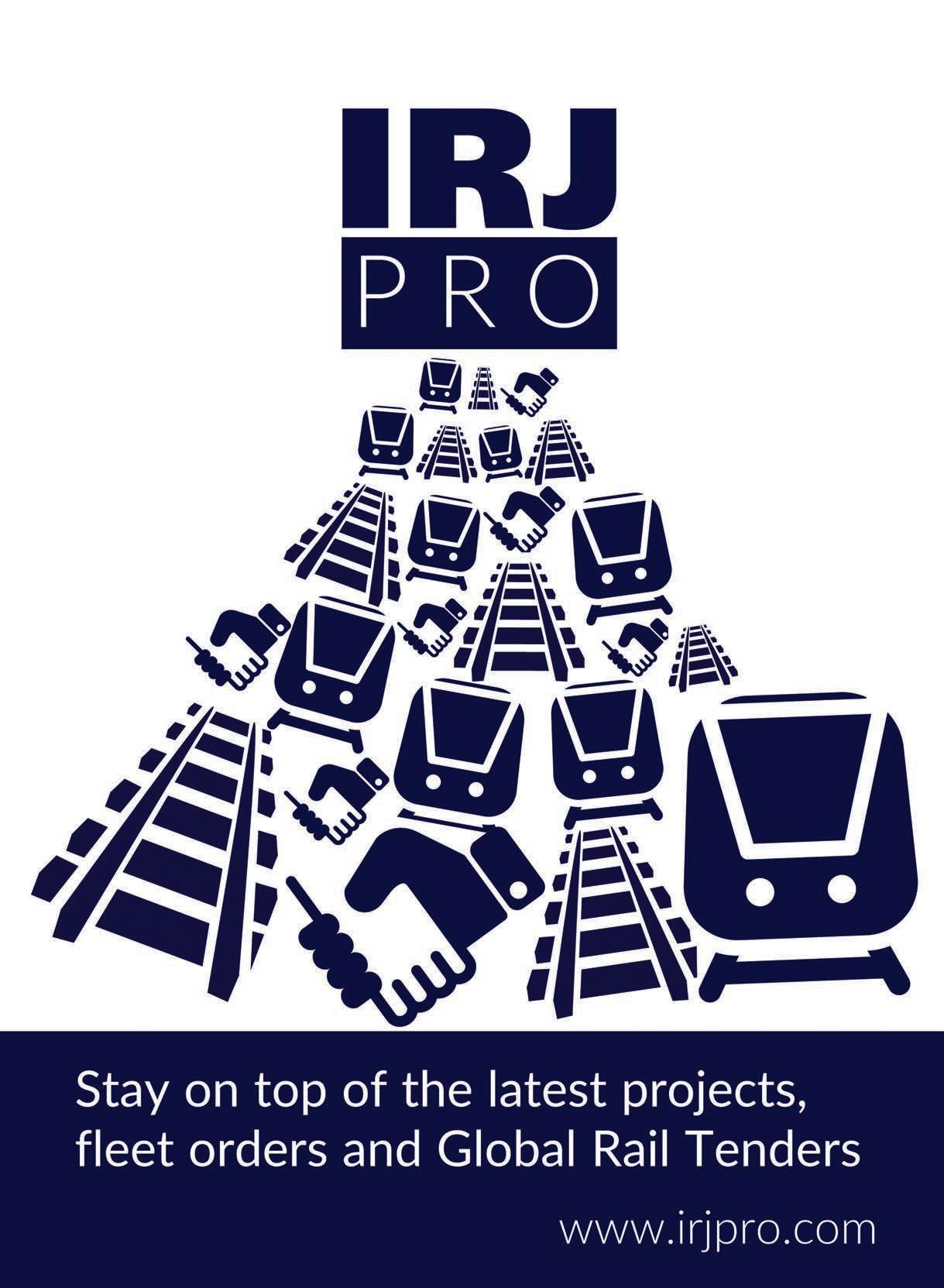
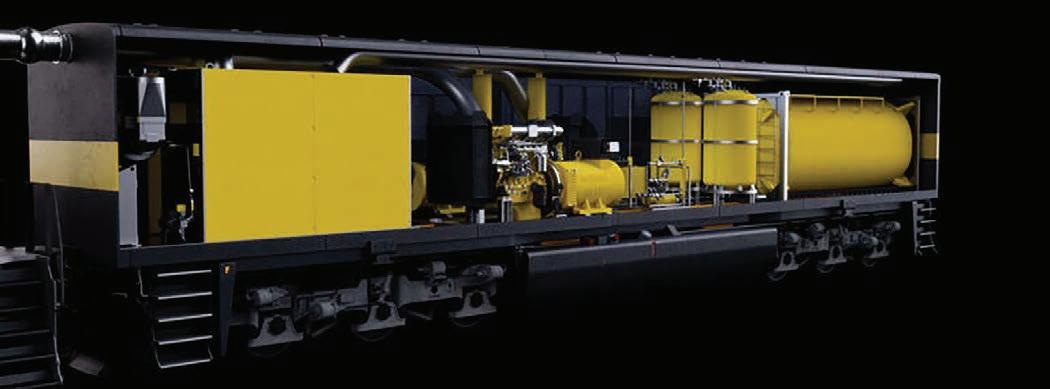
Anacostia Rail Holdings subsidiary Pacific Harbor Line (PHL) has entered into a development agreement with Remora, a Michigan-based climate technology startup that is pioneering mobile carbon capture for freight rail and trucking. The partnership “aligns with PHL’s long-standing commitment to innovation, environmental stewardship and practical pathways toward decarbonization of freight rail operations.”
PHL, which provides rail transportation, maintenance and dispatching services to the Ports of Long Beach and Los Angeles, is an investor in Remora. Anacostia President and CEO Peter A. Gilbertson serves as an advisor. “We’re building this technology not only to meet environmental goals, but to make it financially compelling for railroads,” said Remora Co-founder and CEO Paul Gross. “Pacific Harbor Line’s support and Anacostia’s leadership will be instrumental as we bring carbon capture to freight rail.”
Founded five years ago, Remora designs and manufactures carbon capture technology for rail and trucking. Its technology transforms exhaust into beverage-grade carbon dioxide sold to breweries and greenhouses, generating revenue while reducing emissions. Founded in 2020, Remora has raised $117 million in venture capital and has partnered with major carriers including DHL, Ryder, Union Pacific and Norfolk Southern. The company said its early truck-based pilots “informed a redesigned system that eliminates backpressure, increases efficiency and captures up to one ton of CO₂ per hour at locomotive scale.”
For railroads, Remora places a tender car behind a locomotive “to scrub emissions, preventing them from entering the atmosphere,” NS reported in the Story Yard section of its website on April 28. “Locomotive exhaust enters a containment system allowing CO2 to be stored as liquid and is easily offloaded when the locomotive refuels. The carbon is transported to end-users like concrete, fuel, and chemical producers, for purchase. Remora, a carbon capture pioneer, is leading the work with us, and others like Union Pacific, and Pacific Harbor Line. Revenue from carbon sales is shared with the group.” Also partnering with Remora: Genesee & Wyoming Inc.’s Buffalo & Pittsburg Railroad and Indiana & Ohio Railway.
WABTEC and VALE, a global mining company, have announced a partnership to study a dual-fuel engine capable of running on both diesel and a diesel-ethanol blend. The studies will initially be conducted in laboratories “to validate the concept and evaluate the performance, emissions reduction, and ethanol/diesel substitution rate.” The tests are expected to run through 2027 to assess future application in Brazil’s Vitória-Minas Railway (EFVM) fleet. The agreement to use ethanol, a renewable fuel that replaces fossil diesel consumption, is
part of a series of joint initiatives with Wabtec to advance Vale’s rail decarbonization program, said the companies, which announced an agreement in January to purchase 50 locomotives equipped with Evolution Series engines capable of operating with up to a 25% biodiesel blend. In the coming years, Vale and Wabtec will conduct a series of tests aiming to further increase this percentage. “Innovative initiatives like these, aimed at adopting alternative fuels in our locomotives, are part of Vale’s commitment to accelerating the
decarbonization of our rail network,” said Vale Vice President of Operations Carlos Medeiros. “In 2024, Vale’s rail network accounted for 14% of the company’s carbon emissions.” “For the first time, Wabtec will use ethanol as an energy source in a locomotive, a milestone in the global rail industry. We are committed to developing technological solutions that accelerate the transition to more efficient and sustainable transportation,” said Danilo Miyasato, President and Regional Leader of Wabtec LATAM.
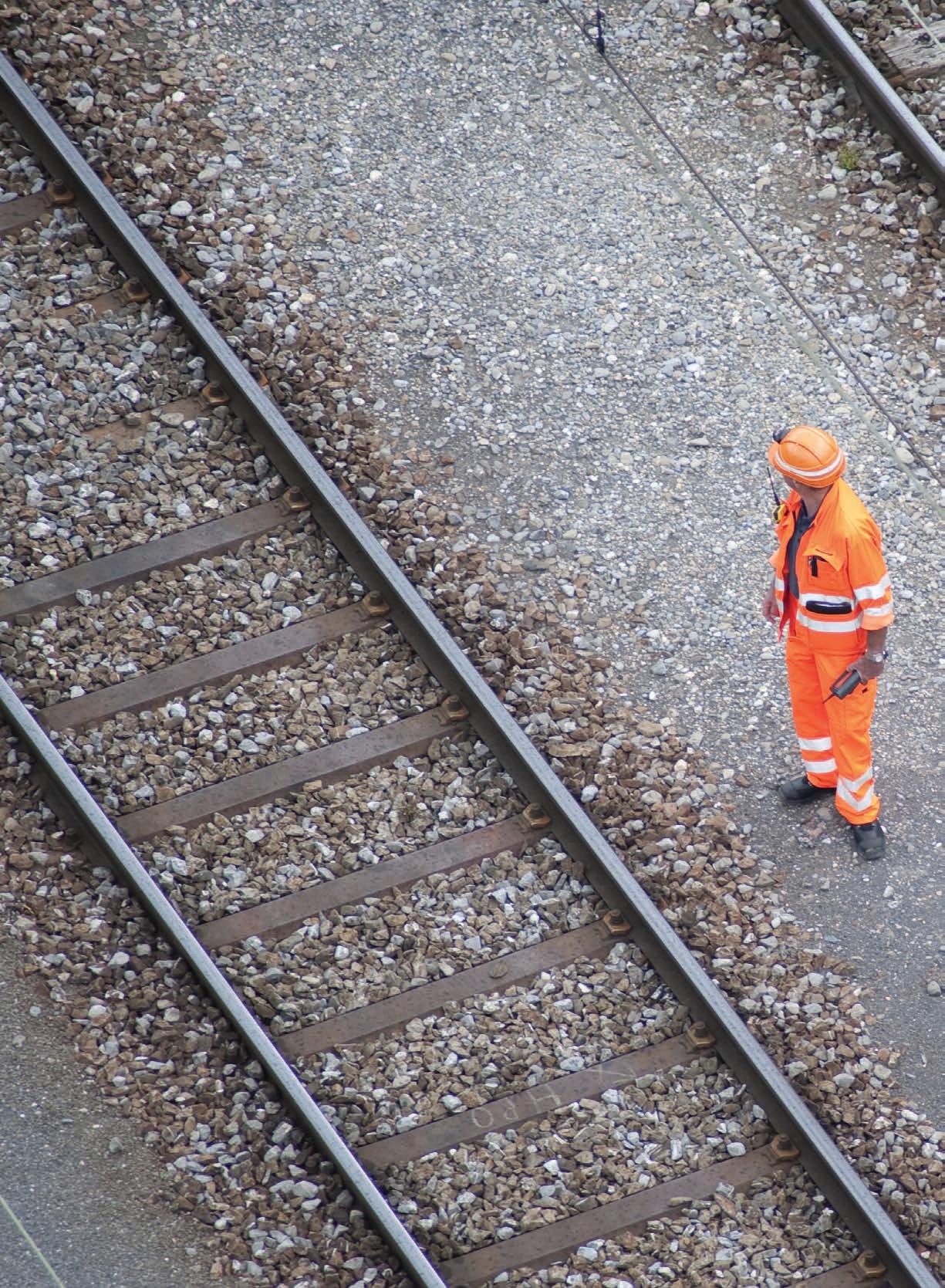





by Buddhima Indraratna
This book presents a comprehensive procedure for the design of ballasted tracks based on a rational approach that combines extensive laboratory testing, computational modeling and filed measurements conducted over the past two decades. Ballast Railroad Design: SMART-UOW Approach will not only become an imeprative design aid for rail practitioners, but will also be a valuable resource for postgraduate students and researchers alike in railway engineering.
Softcover, 176 pages
BKBALLASTRD
General
Railroader: The Unfiltered Genius and Controversy of Four-Time CEO Hunter Harrison • BKHUNTER • $27.99*
Diesel-Electric Locmotives • by Walter Simpson • BKDIESEL • $50.00
Amtrak, America's Railroad: Transportation's Orphan and Its Struggle for Survival • BKAMARR • $40.00*
Train Wreck: The Forensics of Rail Disasters • Soft Cover • BKTW • $24.95*
American Steam Locomotives, Design and Development, 1880-1960 • BKASL • $40.00*
All About Railroading - Second Edition • BKAARR • $35.95
Riding the Rails - Inside the Business of America's Railroads • BKRAILS • $45.00
Amtrak: Past, Present, Future • by Frank N. Wilner • BKAMTRAK • 39.95 *
Operations
Managing Railroad Transportation • BKMRT • 39.95*
Railway Operations and Control - Third Edition • BKROC • $39.95*
Railroad Operations and Railway Signaling
• BKRORS • $28.00



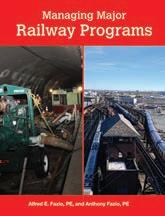



By Alfred E. Fazio and Anthony Fazio
Managing Major Railway Programs explains the analytical principles of Project Management as applied to executing large programs and major projects on active railways and rail transit systems. Topics include program set-up, Work Breakdown Structures (by Systems), Phasing and its relationship to maintenance of rail operations (and maintenance), Project Status including Earned Value Analysis and forecasting, risk management, System Safety (including FRA and FTA approaches), and Systems Integration/Systems Assurance.
The book is written and recommended for railway operating officials, as well as for Engineering Officers, and PM/CM professionals. Full color text pages.
Freight Car
The Double Stack Container Car Manual • BKDOUBLE • $23.95
Guide to Freight Car Air Brakes • BKFCAB • $78.50
Doorway to Safety With Boxcar Doors • BKBD • $31.95
Freight Cars: Lettering and Marking • BKK2CBK • $31.95
Guide to Freight Car Trucks • BKFCT • $104.95
Locomotive
Guide to Locomotive Mechanical Maintenance - SD & GP Locomotives • BKGLMM • $44.95
Guide Locomotive Electrical Maintenances • BKGLEM • $53.95
Fuel Saving Techniques for Railroads - The Railroader's Guide to Fuel Conservation • BKFUEL2 • $34.95
Guide to North American Diesel Locomotives • BKGNADL • $27.99*
The Only Game In Town: The LOCOTROL Story • BKGAME • $69.99* Reference and Dictionaries
Dictionary of Railway Track Terms • BKRTT • $39.00
The Carman’s Dictionary • BKCD • $19.50



Track
Basic Principles of Track Maintenance • BKTMB • $150.00
Fundamentals of Railway Track Engineering • BKFRTE • $160.00
The Track Data Handbook • BKTDH • $56.50*
Transit
Development and Operation of New York's IRT and BMT • by Al Fazio • BKNYIRT • $65.95
Urban Transit: Operations, Planning, & Economics • by Vukan R. Vuchic • BKUTOPE • $155.00*


Perhaps the gutsiest-ever regulatory agency decision was the Surface Transportation Board’s (STB) 2001 imposition of a railroad merger moratorium. Its architect was then-STB Chairperson Linda J. Morgan.
Widely anticipated to fail judicial review, a federal appellate court ruled the STB— with sole statutory authority to approve rail mergers—also had power to post a 15-month stop sign “to realize broader statutory objectives.” Morgan’s disquiet? All had not gone well after the agency acted with vigor in approving numerous Class I unifications during the 1990s.
High-profile service failures followed the 1995 Burlington Northern-Atchison, Topeka & Santa Fe merger to form BNSF; the 1997 Union Pacific (UP)-Southern Pacific marriage; and the 1998 CSX-Norfolk Southern (NS) acquisition of Conrail.
“I cannot in good conscience allow further [mergers] to occur that I believe would run the risk of creating more disruption and instability,” Morgan said in defending the moratorium to develop new merger rules.
Those “new” rules remain untested 24 years later, as the sole Class I unification since—Kansas City Southern (KCS) and Canadian Pacific (CP) to form Canadian Pacific Kansas City (CPKC) in 2023—was evaluated under different rules owing to KCS’s relatively small size. CPKC also suffered post-merger service hiccups.
Time and circumstances may justify a second merger timeout to reevaluate the long-dormant rules ahead of accepting a UP-NS merger application to create the nation’s first transcontinental railroad, which might beget yet a second (BNSFCSX). As the UP-NS merger agreement is effective until Jan. 28, 2028—and allows further time for slippage—a timeout for merger rules reevaluation is doable. POTUS Executive Orders, which otherwise freeze new rulemakings, allow them if the issue is competition.
The rail industry today is materially different than in 2001—valid cause for long-dormant merger rules to be reevaluated and rewritten without ambiguity. Such betterment will assist applicants in making their case more effectively;
To be more clearly defined are ‘pro-competitive’; ‘downstream effects’; ‘common carrier obligation’; ‘public interest’; and how competitive ‘balance’ is preserved ab-
sent a second transcontinental marriage.”
permit stakeholders to tailor their concerns more narrowly; and create for regulators a more transparent checklist by which to evaluate mergers.
To be more clearly defined are “procompetitive”; “downstream effects”; “common carrier obligation”; “public interest”; and how competitive “balance” is preserved absent a second transcontinental marriage. Remarkably, NS told the STB in 2000 that requiring competitive enhancements is “apparent antagonism toward mergers.”
Merger applicants should be required to demonstrate, with specificity, the merger’s likely harm, as well as benefits, to small railroads, communities and modal competition; how they intend to attract on their lines new factories and warehouses as domestic manufacturing is revived; and how they will poach market share from non-union truckers, given rail volumes were stagnant following the 1990s merger wave. The STB might also consider regulatory incentives to counter Class I asset, headcount and service cuts that improve short-term profits at the expense of rail market share.
To assure confidence in the merger review process, there must be clear understanding of regulatory tools available to repair post-merger service failures, preserve major gateways (points allowing traffic interchange with other railroads), and to police rate increases by revenue adequate railroads. Shippers should know how their rate reasonableness challenges will be handled post-merger, and if reciprocal switching can be made an effective
pro-competitive remedy, especially absent a third rail competitor.
Regrettably, STB’s diamond reputation for decisional independence is at risk courtesy of UP CEO Jim Vena’s Sept. 9 White House visit. Following POTUS 47’s earlier firing of STB merger skeptic Robert E. Primus (in court over its legality), and his post-Vena-meeting merger-support shoutout, UP made a bad-optics contribution to POTUS 47’s $300 million White House ballroom. Erecting a temporary merger stop sign to revise, strengthen, clarify and make more transparent 24-year-old merger rules ahead of considering a UP-NS merger application may also be the STB’s best image-preserving mop-up option to this unfortunate doo-doo dump.
Railway Age Capitol Hill Contributing Editor Frank N. Wilner was assistant vice president, policy, at the Association of American Railroads and a White House appointed chief of staff to Republican STB member Gus Owen, who voted in favor of the 1997 UP-SP merger. He is author of “Railroads & Economic Regulation,” available from Simmons-Boardman Books, www.railwayeducationalbureau.com/ product/railroads-economic-regulation-aninsiders-account/, 800-228-9670.


FRANK N. WILNER
Just about everybody has at one point in their life mused about the paradoxical nature of the weather forecaster, the most common refrain being something akin to “I’d like to get paid for being wrong all the time.” Pity then the people responsible for predicting the severity of the Atlantic hurricane season.
With one month remaining in the 2025 Atlantic hurricane season, predications of an above average season (that’s 13-18 named storms) feel like it has fallen quite flat as there has been only one named storm that has made landfall in the U.S. in 2025 (Chantal in July).
Around most coastal regions the word “Hurricane” is a bad word. Another bad word in those regions is “drought.” The lack of big storms and low rainfall has drought level conditions permeating the Texas Gulf region. Specifically in the Corpus Cristi area, drought conditions are heading into their third year. The dearth of available water is creating long-term havoc for the chemical facilities populating the region.
The Wall Street Journal reported in October that the City of Corpus Cristi expects to be unable to meet industrial and residential demands for water within the next 18 months. This is the result of a three-year period with below average rainfall. Attempting to address the situation, the city agreed to purchase water rights to a nearby aquifer for $169 million. This would allow the city to draw 12 million gallons of water from the aquifer per day. The water would be available just as the city expects to run out.
Corpus Cristi is home to plastics plants and refineries owned and operated by LyondellBasell, Flint Hills, OxyChem and Chevron, among others (see Google Map, above). It is also close to the Matagorda, Texas, area, which houses an additional plethora of chemical plants.
As noted in several “Financial Edge” columns, the chemicals rail loadings segment has been a bright spot over the past few years. This growth is expected to continue. Economic uncertainty, tariffs and a growing presence in China in the petrochemical space has caused some near-term weakness for some products in the segment.
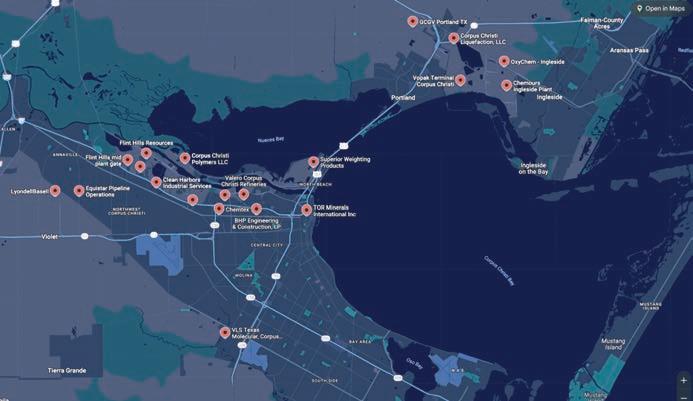
The weakness is causing disruption in the space. Recently, Exxon announced a decision to delay construction on a $10 billion plastics facility in Calhoun County (in Matagorda Bay), whose offtake was meant to serve the Chinese market. The plans to delay construction also followed the rejection by a county district judge of a 50% reduction in property taxes for Exxon in exchange for building the facility.
Don’t mistake correlation for causation. The issues facing the petrochem market right now are global in scale and have a long tail that has yet to be unwound.
Still, there is the water issue. Right now, Corpus Christi is drawing water from nearby wells before attempting to pivot to drawing water from the Gulf Coast Aquifer. Farmers in counties neighboring the wells and aquifer are worried about their wells running dry and about increased levels of salinity in the water they draw from the same aquifer. (For those from urban areas, salt water = dead crops.) Potential plans for a desalination plant were scrapped. The county was afraid limitless water would incentivize additional industrial investment.
Water issues consistently run through industrial expansion, production and global trade. The situation in the Panama Canal remains tense as Panama pursues a $1.6 billion modification to address water issues. By some estimates, Texas will be in a water emergency by 2030 (and that is after a decadeslong process building man-made reservoirs to serve the Dallas Fort Worth Metroplex).
While moving water by rail could be the “next big thing,” more likely is an increase in the cost of chemical-related production and a winnowing away of some of the current U.S.-based competitive advantages in the chemical space. That could turn the growth story into a contraction narrative as production of commodities moves to countries with water supplies that can be routed to serve industry.
As climate patterns evolve, expect water considerations to become more prominent in industrial project development. It may not be a headline grabber for the next three and a half years or so, but root around a little bit and you’ll see that there’s a tangible level of concern about the tension between supply, industrial demands and booming residential demand. Stress on industrial growth is not a positive for the rail economy, long-term.
At least for 2025, the forecasters do get their comeuppance; they get credit as long as a storm gets a name. In the Atlantic Basin, catastrophic Melissa is the season’s 14th named storm. See—above average after all.
Got questions? Set them free at dnahass@ railfin.com.


DAVID NAHASS President
CSX congratulates Christina Bottomley and Tammy Butler on being named 2025 Railway Age Women in Rail honorees. Their leadership, vision, and commitment drive innovation, operational excellence, and growth across the rail industry.
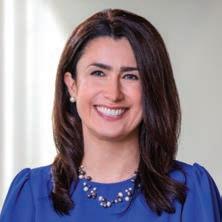
As Vice President of Business Development and Real Estate, Christina Bottomley is shaping the future of rail-integrated growth. Under her leadership, CSX has nearly doubled its number of shovel-ready, rail-served development sites and built a portfolio of over 500 projects supporting onshoring and reshoring efforts. Christina co-created CSX InnovationX to accelerate the adoption of transformative technologies, and she continues to strengthen our partnerships with short line railroads and local communities.
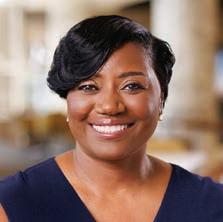
Tammy Butler, Vice President and General Counsel, leads with purpose and impact. A champion of regulatory excellence and employee engagement, Tammy exemplifies what it means to lead with integrity. She oversees the Law Department, Corporate Secretary’s Office, and Environmental and Hazardous Materials teams, ensuring the company operates with the highest standards of integrity and compliance.

Railway Age is celebrating nine years of recognizing women in the freight, passenger, government, and supply sectors. These trail blazers are not only excelling at leadership and community service but also driving the industry forward. This year, 25 railroaders earned the publication’s Women in Rail award.
Established in 2017, the annual award is presented to railway industry women in the United States, Canada and/or Mexico for their outstanding leadership, vision, innovation, community service involvement and accomplishments. In an industry typically dominated by men, they have a track record of breaking down barriers and helping to create industry opportunities for women.
“Congratulations to this year’s distinguished group of women!” Railway Age Publisher Jonathan Chalon said on behalf of the judging committee, which included Railroad Financial Corporation Senior Advisor Barbara Wilson, Gateway Development Commission Executive Vice President Catherine Rinaldi, and the Railway Age staff. “Our 25 honorees, plus five selected for honorable mention, came from a strong field of nearly 100 nominations. We are proud that all 30 will be recognized at the 2026 Railway Age/RT&S Women in Rail Conference, to be held Oct. 6-7 at the Hyatt Regency Schaumburg.”

BARBARA WILSON Senior Advisor
Railroad
Financial Corporation
Wilson served previously as President and CEO of short line holding company RailUSA, providing strategic leadership and implementing long-range goals, plans and policies. Prior to joining RailUSA in 2019, she was President of Wells Fargo Rail, where she led business growth by acquiring three industry competitors to build the largest railcar leasing business in North America. She holds a bachelor’s degree from Boston College and an MBA from Babson College.

JEANNIE ALEXANDER
Vice President, Rail
Operations
Chicago Transit Authority (CTA)
Alexander is a 19-year CTA veteran. She began her career there as an intern and has risen through the ranks to Project Specialist; Training Specialist, developing programs for customer service, safety and operations; Manager-Administration, Rail Operations; General Manager-Rail Operations,

CATHERINE RINALDI
Executive Vice President
Gateway Development Commission (GDC)
Rinaldi oversees all essential administrative functions, while developing and tracking metrics to ensure that strategic objectives are achieved at GDC, the bi-state authority charged with delivering the Hudson Tunnel Project. She was previously President of MTA MetroNorth Railroad, the first woman to hold that position. From February 2022-October 2023, she simultaneously served as Interim President of MTA Long Island Rail Road. Rinaldi is a summa cum laude graduate of Yale College and a graduate of the University of Virginia School of Law.
implementing a comprehensive training program that addressed the operational aspects and safety compliance required by new federal safety regulations; and Director-Service Delivery, before taking on her current role. She is now responsible for keeping all eight of CTA’s rapid transit lines moving. Alexander not only works to help the transit authority remain competitive and responsive to market changes but also fosters collaboration, inspiring others to embrace change and pursue best practices. She also gives back, participating in and supporting local charitable events. Alexander is a 2022 graduate of the Leadership APTA program.
Manager Terminal Operations
Norfolk Southern (NS)
At just 25 years old, Bates became NS’s Lead Trainmaster in Ft. Wayne, Ind., overseeing craft employees and experienced supervisors alike. Within two years, she was elevated to her current role, leading more than 150 employees at the Oakwood Terminal and surrounding Detroit operations, driving operational
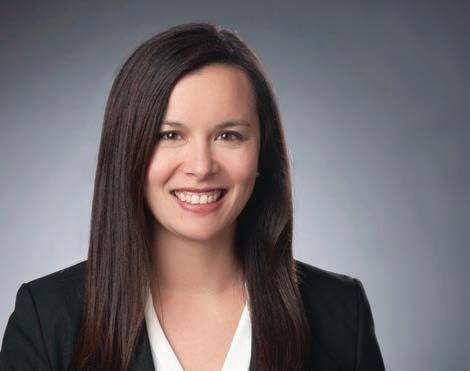

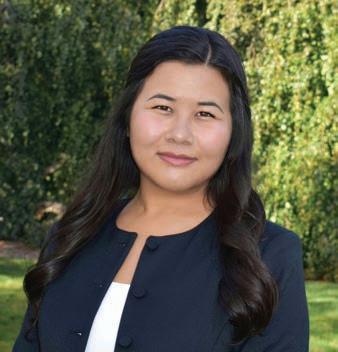
excellence in a region critical to automotive supply chains and the Canadian interchange. Bates led the rollout of Qualified Mechanical Inspection schedules for yard and local engines across Detroit, Toledo, and Ft. Wayne. Known as a proactive, data-driven problem-solver, Bates works to strengthen work communications; she partnered with a Road Foreman to develop a divisional newsletter that is now becoming a regional communications tool.





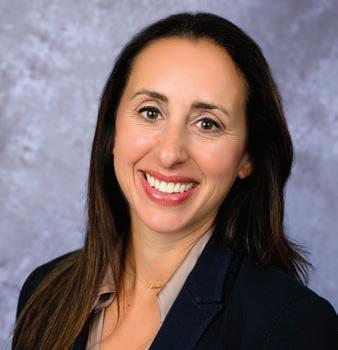
TINA BECKBERGER Chief Commercial Officer
American Industrial Transport (AITX)
Beckberger has been instrumental in establishing AITX as a top integrated railcar lessor through her hands-on, customer-first approach. She successfully guided the operational and cultural integration of SMBC Rail and The Andersons Rail Group, delivering measurable improvements in fleet performance

and customer service, and transformed siloed teams into an integrated, solutions-driven commercial force, improving responsiveness and value for customers across leasing, maintenance, and regulatory services. She has also spearheaded the rollout of tools and analytics to provide customers with enhanced fleet visibility and real-time insights. Beckberger elevates female leaders through strategic hiring and promotions and helped launch a leadership development program to mentor and prepare emerging talent for long-term success. According to her award nominator, Beckberger’s “ability to lead through uncertainty while creating stability and progress sets her apart as a trailblazer.” She has guided teams through economic downturns, corporate restructuring, and market volatility, maintaining focus on long-term results and customer trust. Beckberger is a Western Railway Club Board Member, and champions AITX’s involvement in local outreach programs, such as Blessings in a Backpack, where employees recently came together to pack 500 bags of food for children facing food insecurity in Chicago.
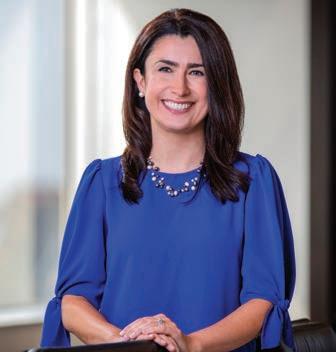
Vice President, Business Development & Real Estate CSX
Bottomley manages a vast portfolio of real estate properties to support CSX rail operations, facility expansion, and industrial development initiatives. Under her leadership, the Real Estate team has maximized the value of the Class I railroad’s approximately 300,000 acres of

G&W congratulates Arielle Giordano, Vice President of Government and Industry Affairs, on her well-deserved recognition in this year’s “ Women in Rail” feature! Arielle’s knowledge, passion for politics and keen ability to build longstanding relationships are key to ensuring our company and industry remain a safe, efficient and viable mode of transportation for businesses and communities across the country.



BNSF proudly congratulates STEPHANIE KUNTZMAN for being recognized as a 2025 Women in Rail Honoree by Railway Age.

property and $2 billion in capital investments, ensuring the infrastructure is well-maintained while nearly doubling the company’s strategic growth-focused investments. Bottomley has spearheaded the development of 500-plus projects, supporting the current trends of onshoring and reshoring, and expanded the CSX Select Site program, increasing each year the number of shovel-ready, rail-served development sites. As the co-creator of CSX InnovationX, a cross-functional “shark-tank” style initiative, Bottomley has been instrumental in identifying emerging technologies and innovative solutions to improve the railroad’s efficiency and to drive its growth. Active in the community, she is executive sponsor of the CSX Pride Business Resource Group; serves on the Advisory Council of Equality Florida; is a Board Member and Treasurer for the Jacksonville Women’s Leadership Forum; is a member of the United Way Tocqueville Society, and is a United Way Stein Fellowship mentor. Additionally, Bottomley has leveraged her role at CSX to help extend fiber optic cable to several communities on the railroad’s network.
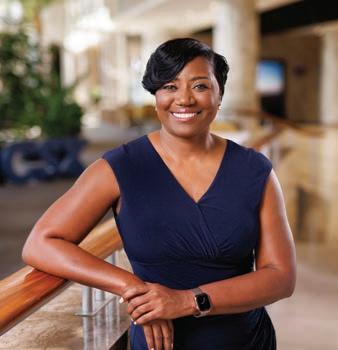
TAMMY BUTLER Vice President-General Counsel
CSX
Butler’s diverse skill set as a Florida State Barcertified attorney and certified public accountant has over the past two decades enabled her to lead CSX initiatives that drive operational excellence, regulatory compliance, and strategic growth. As Head of Real Estate, she showcased her ability to manage complex,
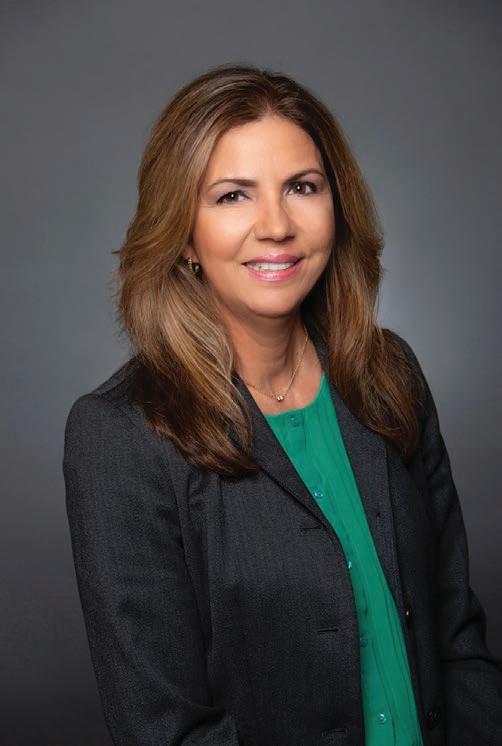
high-value projects, playing a pivotal role in a $525 million infrastructure transaction between the Class I and the Commonwealth of Virginia that enhanced rail infrastructure and operations. Now, as Vice President-General Counsel, Butler leads the Law department, Corporate Secretary’s office, and Environmental and Hazardous Materials teams, ensuring the company operates with integrity and compliance. She has also participated in an executive development and coaching program to further hone her leadership skills. Butler is deeply committed to giving back to the industry and her community. As the executive sponsor of CSX’s HOLA Business Resource Group, she empowers Hispanic and Latin American employees, fostering engagement and inclusion and creating opportunities for professional growth. She also serves on the boards of the American Heart Association and City Year Jacksonville, where she supports initiatives that create opportunities for young adults to volunteer in Duval County schools, and was a mentor through the 2024 CSX Women’s Development Program.



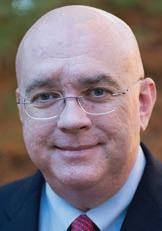
C.
Railway Age
David C. Lester
Railway Track & Structures

Kevin Smith International Railway Journal
Railway Age, Railway Track & Structures and International Railway Journal have teamed to offer our Rail Group On Air podcast series. The podcasts, available on Apple Music, Google Play and SoundCloud, tackle the latest issues and important projects in the rail industry. Listen to the railway leaders who make the news.
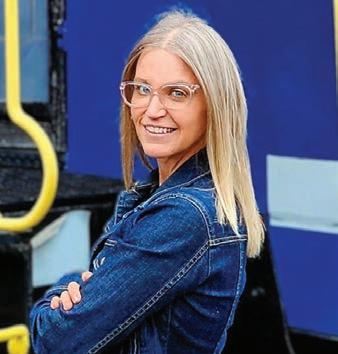
ANDREA DOBBELMANN CEO
Progressive Rail Incorporated (Railway Age Honorable Mention, 25 Under 40 Program for 2021)
Dobbelmann joined Progressive Rail Incorporated in 2017 as Corporate Controller, and in 2019, became the first female CFO for the company, which operates 11 short lines in seven states. When Progressive’s chief executive
stepped down in 2022, Dobbelmann was challenged to take on the role and has excelled. She starts early and stays late so everyone has what they need, and takes time for one-on-one sessions with existing and new employees alike to ensure their success, according to her award nominator. She has been instrumental in applying for and receiving more than $65 million in CRISI grants for two short lines in Washington State and Minnesota, a first for Progressive. These investments for critical infrastructure upgrades not only support economic development by enabling local industries to expand their shipping capabilities but also position the company to attract new customers and explore new business opportunities. Following a dramatic drop in rail traffic, due to the loss of Northern White franc sand, Dobbelmann exemplified strength, resolve, and tenacity by developing a recovery plan, keeping up team communications, and allowing “scarce cash” to go to new marketing initiatives. The outcome, according to her nominator, is “Progressive Rail is now stronger than we have ever been in our nearly 30-year history.”

Vice President Global Program Management Wabtec Corporation
Drabic has dedicated her career to the rail industry, starting as a 19-year-old college intern with GE Transportation. Over the past 25-plus years, she has held roles across the business, from supply chain to finance, and now leads
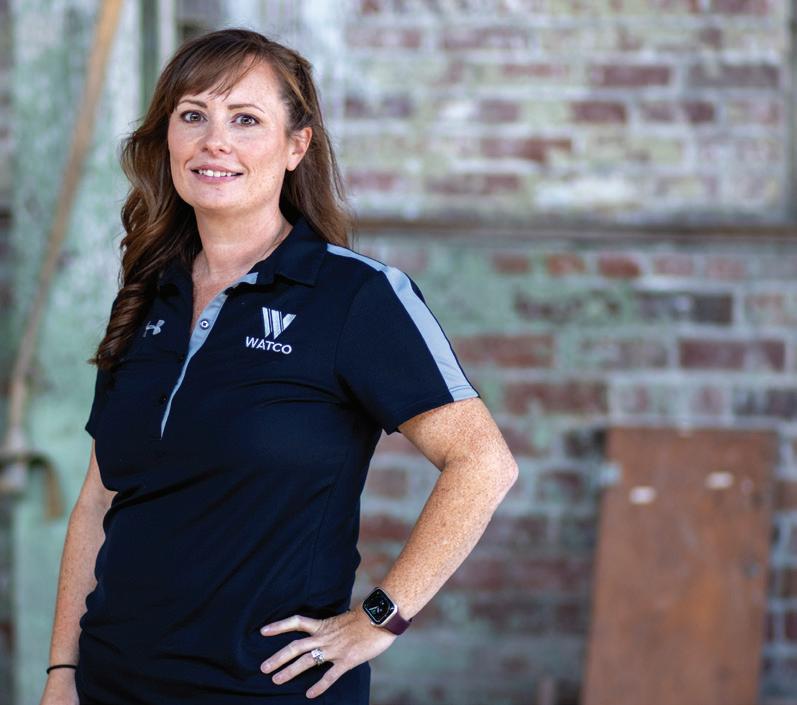
the Global Program Management team for Wabtec, responsible for executing commercial deals and ensuring that the company delivers on its commitments to its customers. Since she stepped into that role in 2019, when Wabtec acquired GE Transportation, Drabic’s team has delivered nearly 2,000 locomotives to customers in more than 20 countries on every continent, except Antarctica. Today, that team is providing locomotives for the Simandou project in Guinea. Drabic is a leader at Wabtec and in her local community. She is a Wabtec Training Program teacher; the founder of the Women of Wabtec employee resource group; an active volunteer for the annual Wabtec Girls STEM camp; part of the Society of Women Engineers Conference Planning Committee for Wabtec; leader of Wabtec’s annual United Way drive; Board Chair of United Way of Erie County, Pa.; and Board of Corporators

SANDRA ELLIS Vice President, Bulk, Sales and Marketing CN
With more than 25 years of experience in rail and commodity sales, Ellis has built a reputation for closing complex, high-value deals and aligning commer
all of
Inter Pipeline. In her current role, she strengthens customer relationships in core Bulk commodities (grain, fertilizers, coal), drives market expansion into new or under-served Bulk markets, and implements improvements in communication, operations coordination, and yield management to respond proactively to seasonal, environmental, or logistical challenges. In the Bulk business, commodity prices, tariffs, and global demand can shift overnight. Ellis has consistently adapted strategies to protect CN’s customers and revenue. Additionally, she has opened doors for women through leadership development, internal promotions, and ensuring diverse representation in key sales and commercial teams. Over the past six years, Ellis and her family have raised more than $40,000 through Betty’s Run for ALS. “We fundraise because we believe in hope, in progress, and in the power of showing up—not



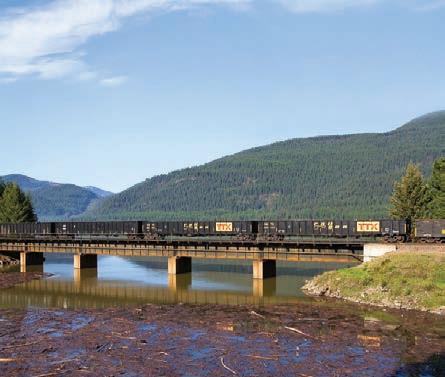



TANIA FAUCHON
Americas Quality Director & Group
Railway Safety Director Alstom
Fauchon, who is based in Canada, leads Alstom’s efforts to improve rolling stock-manufacturing site quality and has reduced production defects by 70%. She transformed lower-performing legacy Bombardier Transportation sites,
following Alstom’s 2021 acquisition. More recently, Fauchon was charged with leading Railway Safety for the company’s 86,000 employees worldwide. She oversees the Safety Management System, ensuring company-wide adherence and all necessary safety releases are completed when delivering Alstom products; Fauchon in 2024 secured the safety release for Alstom’s Coradia iLint in North America, a milestone in the successful launch of the hydrogen fuel cell-powered passenger train. Additionally, she leads panels during all-employees events in the Americas supporting continuous learning on Diversity, Equity and Inclusion and during the company’s Quality and Safety weeks. Fauchon is a Board Member of the Sherbrooke University Center of Advanced Technology; an executive mentor for the Alstom-sponsored Carleton University Women in Engineering and IT Program; and a co-executive sponsor of the company’s Operation Lifesaver initiatives in the U.S. and Canada.
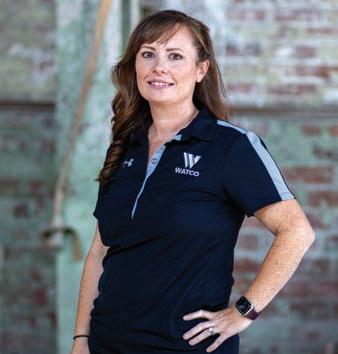
REBEKAH GARNER Service Assurance Rail Support Watco
Garner has played a key role in developing three software applications that have allowed Watco to automate what were previously paperbased, manual activities. A liaison between IT and the field, she took part in up-front fact-finding, including federal requirements, all the way through to testing, rollout, and

post-rollout tweaks and enhancements. She also worked to earn team members’ trust and is assisting in their transition to using the new apps. Roam is railcar management software used by crews in the U.S. and Canada to build trains and execute the delivery and pickup of cars along their routes; CrewConnect streamlines dispatching, crew activity tracking, and hours-of-service reporting; and Track Master allows maintenance-of-way inspectors to log exceptions for Watco-operated track and


ARIELLE GIORDANO
Vice President of Government & Industry Affairs
Genesee & Wyoming (G&W) Railroad Services, Inc.
Before joining G&W, Giordano served as Counsel for the U.S. House of Representatives T&I Committee’s Subcommittee on Railroads, Pipelines, and Hazardous Materials, and a law clerk for the U.S. Senate’s Committee on
the Judiciary. She contributed to key railroad legislation such as the 45G Short Line Railroad Tax Credit and the FRA CRISI grant program. Later, Giordano was entrusted with developing and managing the first U.S.-based government affairs function for Canadian Pacific, which was critical to guiding CP through its merger with Kansas City Southern. She lobbied for the combination, which was approved in 2023 to create the first single-line, transnational railway connecting Canada, the U.S., and Mexico, and providing hundreds of links to small railroads. In just one year since joining G&W, she has educated anyone at the company who has asked on the political process and current affairs relating transportation; she simplifies complex ideas and issues, so everyone understands what they mean for G&W and the industry. Says ASLRRA President Chuck Baker: “Arielle is an absolute workhorse in our short line railroad industry’s government affairs efforts. Whether it’s gathering cosponsors for tax credit legislation or developing a disaster relief bill, she is a leader in our world. She’s always the most prepared person in the room.”
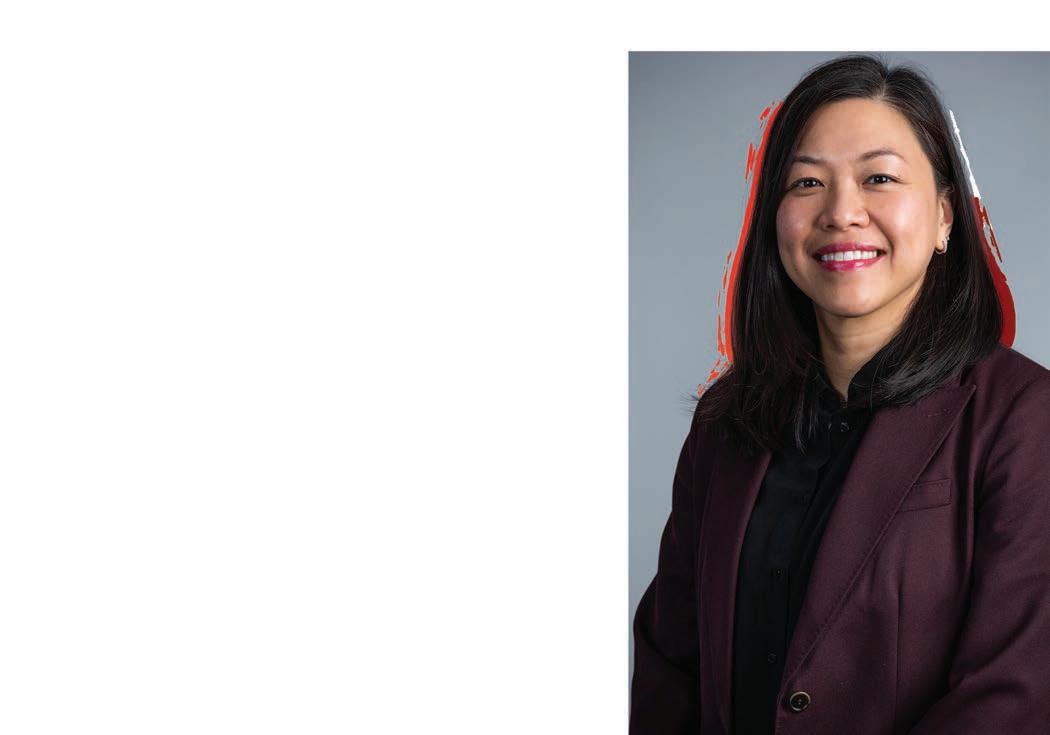

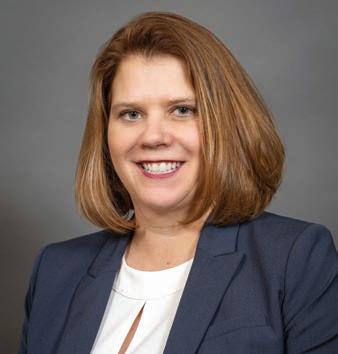
REBECCA GREGORY
Vice President Administration & Chief of Staff
Pacific Railroad (UP)
As Chief of Staff to CEO Jim Vena, Gregory is involved in overseeing all aspects of UP, including driving key strategic initiatives to foster engagement, bolster safety, increase efficiency, and enhance service. Previously, she ran the railroad’s commercial
litigation practice, winning numerous cases and successfully defending against claims. Gregory was a member of the team that defeated class certification for UP in 2017 in one of the largest antitrust class actions ever filed. But it was during her time serving as Chief of Staff for UP’s COO in 2020 that she had the largest impact at the company. Gregory developed a training program for frontline managers that synthesized the COO’s vision, emphasizing safety, people, service, asset utilization, and cost control.
Leveraging the relationships and knowledge gained over her career, as well as from field visits and interactions with employees at all levels, Gregory created a comprehensive manual that included the resources and tools available to managers. She also provided practical training for new managers. The training program and manual were provided to hundreds of managers, and the key performance measurements today show lasting positive impacts on both managerial effectiveness and efficiency, according to Gregory’s award nominator.
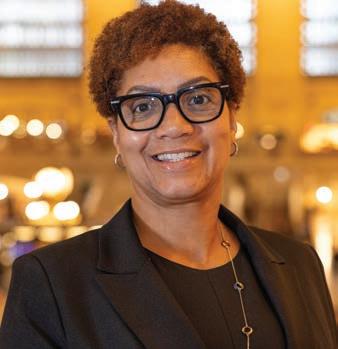
YVONNE HILL-DONALD Chief Administrative Officer
MTA Metro-North Railroad
Hill-Donald has made lasting contributions to both MTA Metro-North Railroad and MTA Long Island Rail Road, shaping the workforce, organizational structure, and administrative functions that sustain safe and reliable service for millions of riders. In her current role, she has transformed the alignment of people, resources,

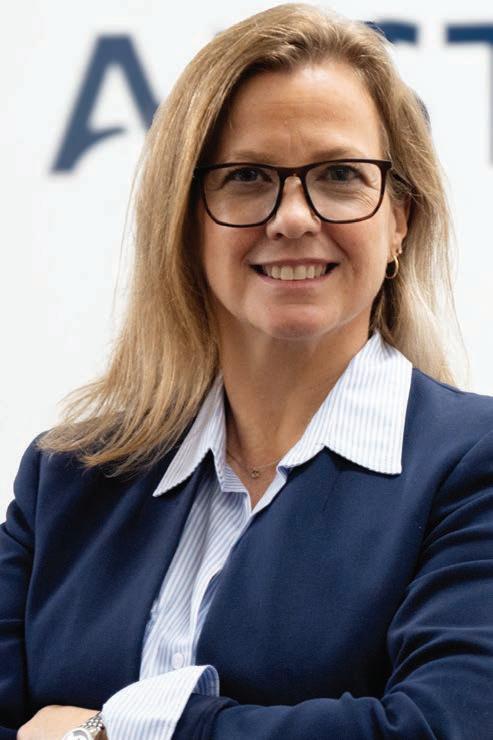
and processes to better support operations and improve efficiency. She has also assumed direct responsibility for Metro North’s Operations Training Department, where she has expanded and modernized training programs for frontline employees and managers. Hill-Donald’s impact extended across both railroads during one of the most complex projects in North America: the opening of Grand Central Madison. As Acting Senior Advisor to the Interim President of LIRR, she ensured that the administrative and organizational resources were in place to successfully launch this multibillion-dollar expansion. Earlier in her career, Hill-Donald modernized Metro-North’s HR systems, compensation structures, and workforce planning strategies. She has consistently been a voice for organizational change, leading initiatives that improved succession planning, talent acquisition, and employee engagement that directly benefited the railroad’s ability to recruit and retain top talent in a highly competitive industry. Colleagues credit her with creating a culture in which people feel both supported and accountable.

STEPHANIE KUNTZMAN
Assistant Vice President, Consumer Products
BNSF Railway (Railway Age Honoree, 25 Under 40 Program for 2022)
Kuntzman has played a key role in leading the development of customer-centric intermodal solutions to meet the evolving needs of supply chains and to drive value for BCOs (beneficial
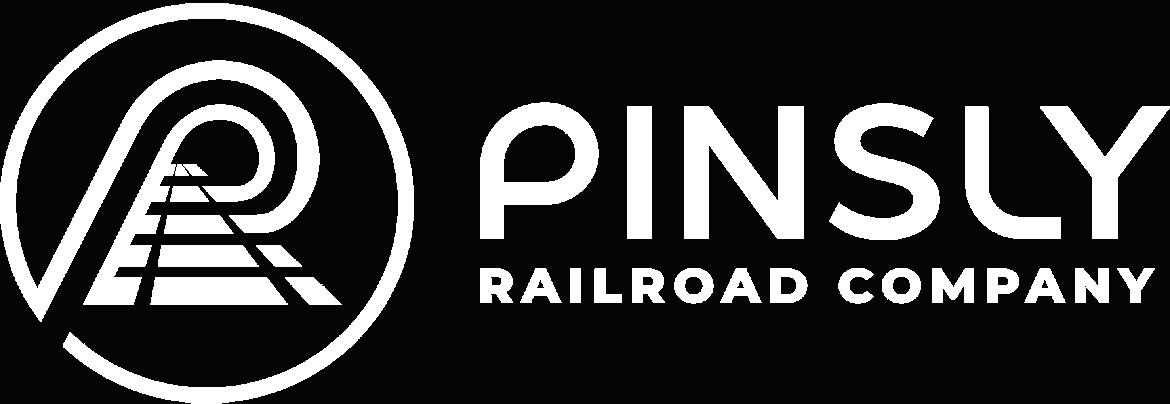
We are thrilled to celebrate
Gaynor Ryan
Chief Human Resources Officer at Pinsly Railroad Company as one of Railway Age’s 2025 Women in Rail Honorees.
cargo owners). Among them: Quantum, a J.B. Hunt and BNSF service, launched in 2023 to help BCOs convert highly service-sensitive highway freight to intermodal; and BNSF logistics parks and intermodal customer co-location solutions, allowing BCOs to benefit from lower costs, greater operational flexibility, and lower GHG emissions when shipping intermodal. She has also led efforts to develop APIs to share real-time data between BNSF and its intermodal carrier partners and BCOs. Kuntzman makes development a priority for herself and those around her. She is a member of the Retail Industry Leader Association’s Transportation Sustainability Working Group, representing BNSF as a strategic project partner; serves as a BNSF mentor; assisted with the launch of IANA’s Future Leaders of Intermodal Program; and has been a commercial lead for BNSF’s Sustainable Freight Leadership Council, a group comprising approximately 10 customers and BNSF leaders that shares insights and best practices to advance freight decarbonization. Kuntzman also volunteers at the Tarrant Area Food Bank in Texas.
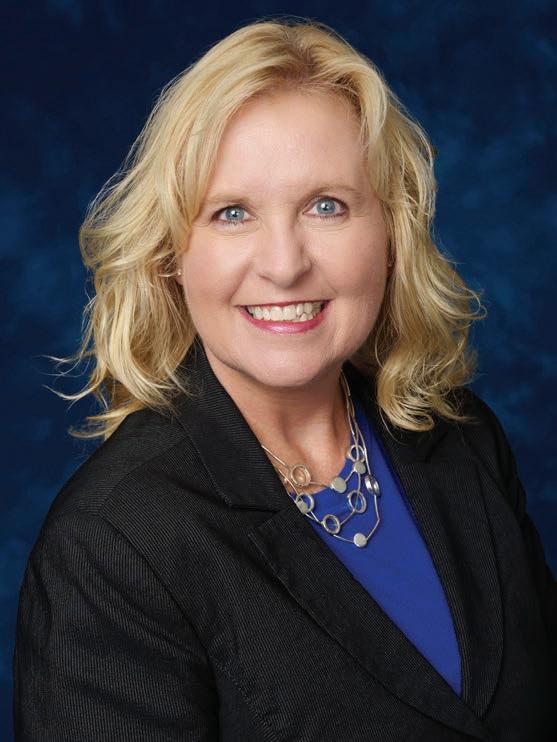
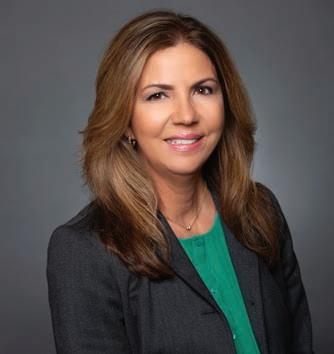
MARIA ORCERA AVP, Revenue Accounting & Customer Service
Patriot Rail
Orcera is a first-generation college graduate and holds a master’s degree in public administration from the University of Puerto Rico, which she earned while working full-time and managing a single-parent household. She began her transportation career at age 18 as a distribution
company intern. After graduation, she worked in the maritime and trucking industry for ten years. Orcera then brought her expertise to Florida East Coast Railway. She led the design and development of the railroad’s intermodal and trucking system that streamlined the full load cycle and implemented the “average billing date” initiative, reducing the billing cycle from ten to three days. In 2021, Orcera joined Patriot Rail, a short line and regional rail service provider, as Manager of Revenue, and was quickly promoted to Director of Revenue Accounting and to her current role. She has steered the Revenue Accounting department through Patriot Rail’s largest acquisition to date: Pioneer Lines, which encompassed more than 12 railroads. She also spearheaded the reduction of over-90-day receivables by 85% and total receivables by 43% in just three years; created and implemented the freight revenue system designed for the BNSF intermodal terminal project in Salt Lake City; and in partnership with IT, is leading the integration of Billing, Credit, and Collections, while also designing and implementing new operational workflows.
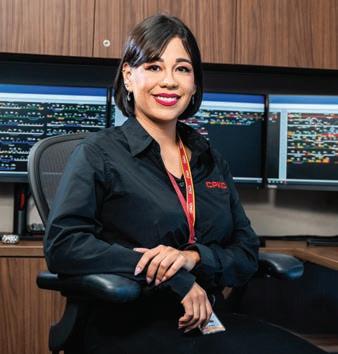
General Manager–Operations Center (Monterrey), Canadian Pacific Kansas City (CPKC), (Railway Age Honoree, 25 Under 40 Program for 2024)
Pinales demonstrates that capability transcends gender and environment. She has served as CPKC’s General Manager of the Operations Center in Mexico since 2023 and guided the
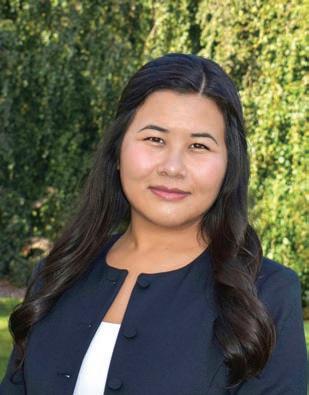
As Manager of Terminal Operations, Zoe leads with purpose, championing safety, accountability, and collaboration across Norfolk Southern’s Oakwood Terminal and surrounding Detroit area. Her innovative approach has helped strengthen inspection practices, improve communication, and set new standards for operations excellence.
Zoe’s leadership is moving our people, our railroad, and our industry forward.
NorfolkSouthern.com ©2025 Norfolk Southern Corporation
team to deliver significant results: In 2024, they increased raw speed by 21%, improved CMCD (car miles per car day) by 12%, and boosted GTMs (gross ton miles) by 22%. This was accomplished with minimal changes to labor agreements, while demonstrating resiliency in overcoming network challenges. Pinales led the implementation of Nexus/RPM and other core operating processes in Mexico. Under her direction, network operations and CPKC operations center teams have markedly improved the quality, accuracy, and timeliness of reporting. In third-quarter 2025, Pinales oversaw cross-functional efforts to address operational challenges in Mexico’s northern region. She worked closely with the Transportation, Network Operations, Mechanical, Engineering and Locomotive teams to successfully restore operations, minimize recrews, and maintain service reliability at key terminals. Pinales was the first woman to serve as Terminal Manager in intermodal operations and the first female Superintendent of Monterrey Yard for Kansas City Southern de Mexico, part of KCS, which merged with CP in 2023 to form CPKC.

SHELLY REID
Vice President Sales & Group Manager
The Greenbrier Companies
Since joining The Greenbrier Companies in 2016, Reid has made significant progress increasing commercial sales, achieving business goals, and empowering women across the industry. She played a key role in securing and executing Greenbrier’s largest Canadian
deal: more than 2,000 railcars. Widely respected as a trusted subject-matter expert, Reid actively mentors members of her department and collaborates across the organization, including with the legal, engineering, and customer care teams. Under her management, these teams coordinate and align contract details, pricing, and compliance. Reid is dedicated to listening to customers and advances railcar designs that best meet their needs. She also manages virtual sample railcar reviews, coordinates inspections, and makes sure that railcars comply with safety and quality standards. Additionally, she supports Greenbrier’s customer experience and post-award teams to ensure customer satisfaction from the start of sale negotiations to order completion. Reid is a member of Greenbrier’s Master Lease Agreement (MLA) Committee, providing input on contract processes and language that lead to successful outcomes for both Greenbrier and its customers.
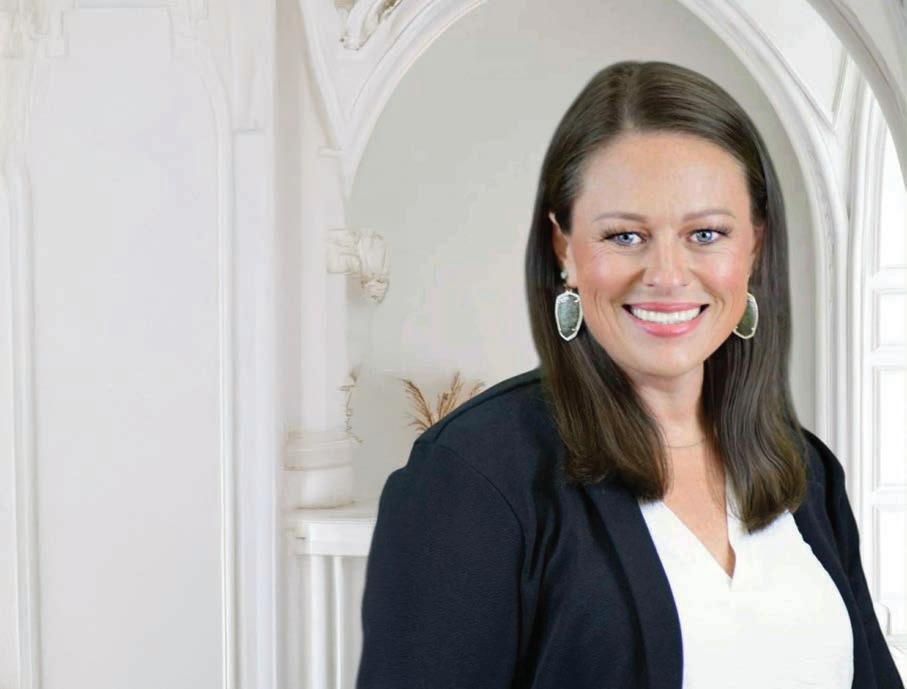

GAYNOR RYAN Chief Human Resources Officer
Pinsly
Railroad Company
Ryan joined the railroad industry in 1994 as a Bangor & Aroostook Customer Service Representative and later became Vice President of Human Resources for that railroad’s successor, the Montreal, Maine & Atlantic (MMA). Following the July 13, 2013, crude oil train tragedy in Lac-Mégantic, Quebec,
Ryan was a part of the senior team that led the turnaround of the Central Maine & Quebec (CMQ), which was created from the bankrupt MMA assets. According to her award nominator, Ryan led with compassion during the transition from MMA to CMQ, which earned Railway Age’s 2016 Regional Railroad of the Year Award. “There are very few people (maybe none) who had to overcome a more challenging set of professional circumstances,” the nominator wrote. “Gaynor did, and with a positive outcome.” Ryan is now responsible for HR, employee compensation and benefits, and administration at Pinsly, where she led the development of the company’s mission statement and core values. She also directs annual “Pinsly Way Day” sessions for all railroad teams, providing updates and allowing for Q&As with executives. Ryan is currently organizing a new leadership training program. She serves as a Board Member for The Shaw House and was recognized last year for distinguished service by the Maine Junior Black Bear Youth Hockey Association.
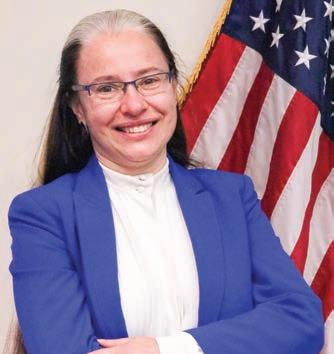
LISA SCHREIBMAN
Acting Vice President & Chief Officer
MTA Staten Island Railway (SIR)
Schreibman’s 20-plus year career across New York’s transit system reflects a combination of strategic vision, operational expertise, and a relentless drive to improve public transportation for all. While she began in planning and strategy roles, she was determined to become known as an operations leader, embracing that


Union Pacific congratulates Rebecca Gregory, vice president-Administration and Chief of Staff, for being named one of Railway Age’s 2025 Women in Rail honorees.
side of the business with attention to how things work, who makes them work, and how to drive performance at every level. Her dedication paid off. Schreibman now heads SIR, bringing a blend of strategic insight and diligence to this vital regional transportation service. In a separate role, VP and Chief Officer of Capital Strategy and Management for MTA, she provided representation for a $32 billion, five-year capital program and led a team of 40 professionals, ensuring that subway operations were not only supported during construction but also positioned for long-term success post-delivery. As Acting SVP of Subways, she guided one of the most complex urban rail systems in the world through a period of transition. Her earlier roles laid the foundation for this trajectory. As Senior Director of Strategic Planning, she took part in interdepartmental initiatives, including fare payment modernization. Her leadership on the No. 7 Line Extension showcased her ability to coordinate environmental reviews, staffing strategies, and operational planning. Schreibman is also dedicated to serving as a mentor through WTS International.
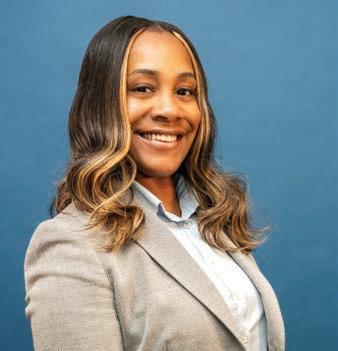
SHAQUANA STEPHENS Acting SuperintendentCommuter Operations
Amtrak
Since joining Amtrak in 2006 as a Reservation Sales Agent, Stephens has steadily advanced to roles of increasing responsibility, including Crew Scheduler, Station Manager and District Manager. This progression reflects her
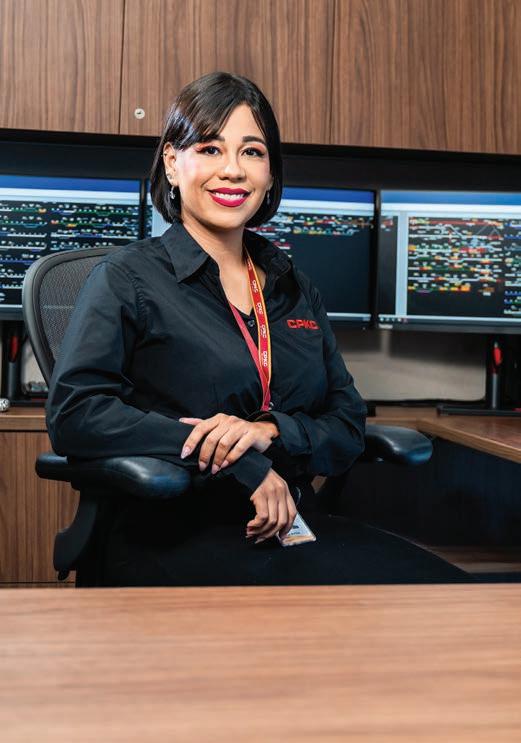
dedication to operational efficiency, as well as a commitment to developing a responsive and prepared team. Stephens served most recently as Assistant Superintendent; now as Acting Superintendent-Commuter Operations, she oversees the MARC (Maryland Area Rail Commuter) Train contract, ensuring safe, efficient, and reliable service for hundreds of thousands of riders each day. Stephens has successfully led teams through service disruptions, coordinating resources, managing frontline employees, and communicating effectively across multiple departments and with passengers to restore service quickly and safely. Under her leadership, process improvements have been implemented to reduce response times for future incidents. Stephens also gives back to the railroad industry, actively mentoring less experienced Amtrak employees and serving as a role model and resource to those aspiring to build long-term careers in transportation.
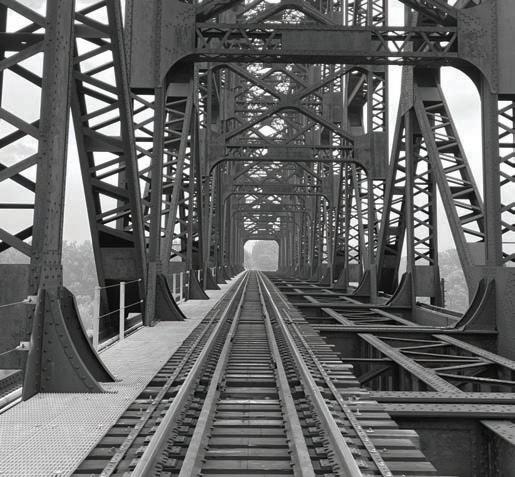
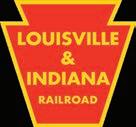

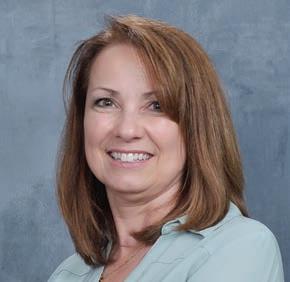
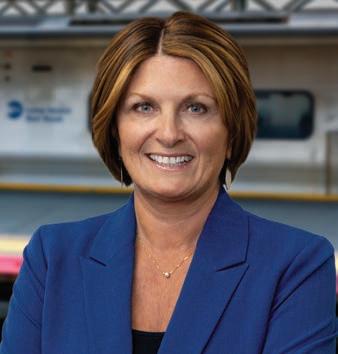
BETH SULLIVAN
Vice President Operations Support & Organizational Planning
MTA Long Island Rail Road (LIRR)
Sullivan has demonstrated exceptional leadership throughout her 30-year career at LIRR, where she has risen from Assistant Conductor to VP. She is responsible for operations planning, corporate training, enhancement projects, business development and customer experience.
Find the right vendors for your business in the Railway Age Buyer's Guide. Search for products, research vendors, connect with suppliers and make confident purchasing decisions all in one place. RailwayResource.com
Sullivan recently oversaw development of an operations plan if five labor unions were to go on strike, demonstrating her management of high-risk, high-impact challenges. Previously, as the commuter railroad’s Chief Transportation Officer, she led 2,000-plus employees and managed a $450 million annual budget. She was instrumental in delivering some of the most complex and high-impact capital projects in the agency’s history, including the implementation of PTC and the Tower Migration initiative; she played a central leadership role in the Main Line 2nd and 3rd Track Expansion programs and the Grand Central Madison project, which significantly increased service capacity and access for riders. Dedicated to fostering employee recognition, inclusion, and mentorship, Sullivan oversaw the planning committees for LIRR’s first annual President’s Excellence Awards and Labor Day Appreciation events, celebrating the contributions of 7,000-plus employees. She represents LIRR in such industry associations as CRC, APTA, AAR, WTS, and COMTO, ensuring diverse voices are part of policy, safety, and best practices conversations.




MARCIA TAURIELLA
Vice President Global Sourcing A. Stucki Company
Tauriella’s knowledge of the rail industry and expertise in creating value for customers have been instrumental to Stucki, from its recent acquisition of Wheelworx to driving major operational and sourcing improvements across the enterprise. She has successfully led efforts through a period of evolving global



trade dynamics, applying her insight to tariff management, vendor strategy and supply-chain resilience. In 2023, she was tasked with creating and standing up a centralized purchasing organization to replace a decentralized model. With help from her team, Tauriella has been a champion of strategic sourcing, introducing a more disciplined approach to vendor-relationship management, total cost of ownership, and supply-chain risk mitigation. She works to ensure Stucki remains competitive and resilient. “Driving change at scale is never easy, but Tauriella has continued to deliver results while earning the trust and respect of her colleagues along the way,” her award nominator wrote. Before joining Stucki, she served Union Pacific, where she played a pivotal role in optimizing freight-car and intermodal-equipment sourcing and led major change-management initiatives that impacted thousands of vendors and employees. Tauriella serves as a mentor and role model for female leaders across Stucki, and brings her passion for the industry into local school classrooms, so students understand the role railroads play in their everyday lives.
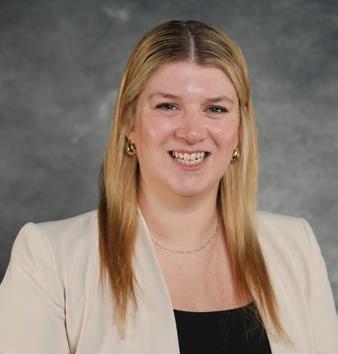
Senior Counsel
Metra
In her role as Senior Counsel at Metra commuter railroad, Theuerkauf advises on procurement and construction contracts, ensuring compliance with federal requirements; and has worked to memorialize onboarding information in a comprehensive guide and resource. She graduated in
2018 with a Juris Doctor degree from DePaul University College of Law, and joined the railroad’s Law Department shortly before it went through a major transition in staffing and restructuring. Theuerkauf helped to guide the team by maintaining transparent communication, setting clear priorities, and advocating for team members’ roles. Recently, she was instrumental in the safe and seamless transfer to Metra from Union Pacific three lines of commuter rail service in the Chicago metropolitan area—a transaction that did not have an existing playbook. “Her work has far surpassed her years of experience, and she is doing the work at a level commiserate to a much senior attorney,” according to her award nominator. Theuerkauf not only mentors and guides new attorneys and legal staff at Metra, but also has served as Director of the Women’s Bar Association of Illinois, as well as Chair of the association’s Continuing Legal Education Committee and Young Lawyers Committee, and as President of Southside Center of Hope’s Young Professional Board.
RAIL GROUP NEWS brings you a daily round-up of news stories from Railway Age, RT&S, and IRJ. This email newsletter offers North American and global news and analysis of the freight and passenger markets. From developments in rail technology, operations, and strategic planning to legislative issues and engineering news, we’ve got you covered.


MICHELLE WAN
Vice President, Projects
Hitachi Rail
Wan has built her 25-plus year career by driving the successful delivery of some of the world’s most complex and high-profile signaling projects. As VP, Projects at Hitachi Rail, she leads 100 project management professionals in North America and 60 worldwide, overseeing an active portfolio of 65 projects
in 15 countries. Having worked across every stage of project delivery, starting as a Project Engineer in Canada, to executive leadership, Wan’s extensive experience and knowledge have enabled Hitachi Rail to deliver safe, reliable, and efficient rail systems in London, U.K. (supporting the Jubilee and Northern Upgrade Program; directing the £2 billion Four Lines Modernization program; and securing operational readiness for the Docklands Light Railway extension to Stratford, ensuring safe and seamless transport for millions of Olympic Park spectators in 2012) and in Doha, Qatar (spearheading signaling support during the FIFA World Cup 2022, enabling more than 18 million passenger journeys in just five days and increasing ridership by 300%). Throughout her career, Wan has focused not only on successfully delivering projects, but also on building long-term partnerships with transit authorities and operators. By emphasizing sustained support well beyond project completion, she ensures customers have confidence that their systems will continue to run safely and efficiently.

Caitlin Holland VP, Real Estate and Economic Development
Railway Age 2025 Women in Rail Honorable Mention Honoree
Congratulations, Caitlin!


LEAH WINDELL
Customer Service Manager
Louisville & Indiana Railroad (LIRC, an Anacostia Rail Holdings company)
Windell exemplifies leadership through action, providing “service with a smile”; following the motto “See a problem; solve a problem”; and asking questions and “learning by doing” so she can be effective in her role. While she initially met resistance when

Congratulations!
Congratulations to Project Manager
Julina Corona on her 2025 Women in Rail honorable mention! Through her industry contributions and support for the next generation, Julina is helping us shape the future of rail.
Join our Team at: Go.RailPros.com/Careers
she wanted to ride with crews to better understand specific spotting instructions at each customer facility, her persistence paid off. Windell has since learned about locomotive 92-day inspections, track work, signaling, and more. All employees, regardless of craft, are now encouraged to ask questions and job shadow to find out how each craft affects the others. “Since our first interaction in 2015, we have viewed Leah Windell as a consummate rail professional who understands the importance of the supply chain,” a LIRC customer said. “Her ‘positive individual efforts’ to help LIRC reach and exceed team goals has always been outstanding. Leah recently project managed a complex, five rail carrier routing option. Her support to get us the most cost effect options while realizing the importance of speed to market was a critical link for the success we all recognized.” Windell is also deeply committed to community service. She is a Repair Affair participant, aiding seniors and disabled individuals with home repairs, and a Kentucky and Indiana Paralyzed Veterans of America volunteer.
JULINA CORONA Project Manager RailPros
DREW ENOCHS Director of Operations, Railroad Products and Services Koppers
CAITLIN HOLLAND VP of Real Estate and Economic Development
Dallas Area Rapid Transit (DART)
CELIA PFLECKL AVP, Amtrak Airo Program Amtrak
MICKI RUST Director, General Equipment TTX Company
We’re proud to celebrate your inspirational leadership that drives innovation and progress for women in rail.

Sandra Ellis Vice-President, Bulk

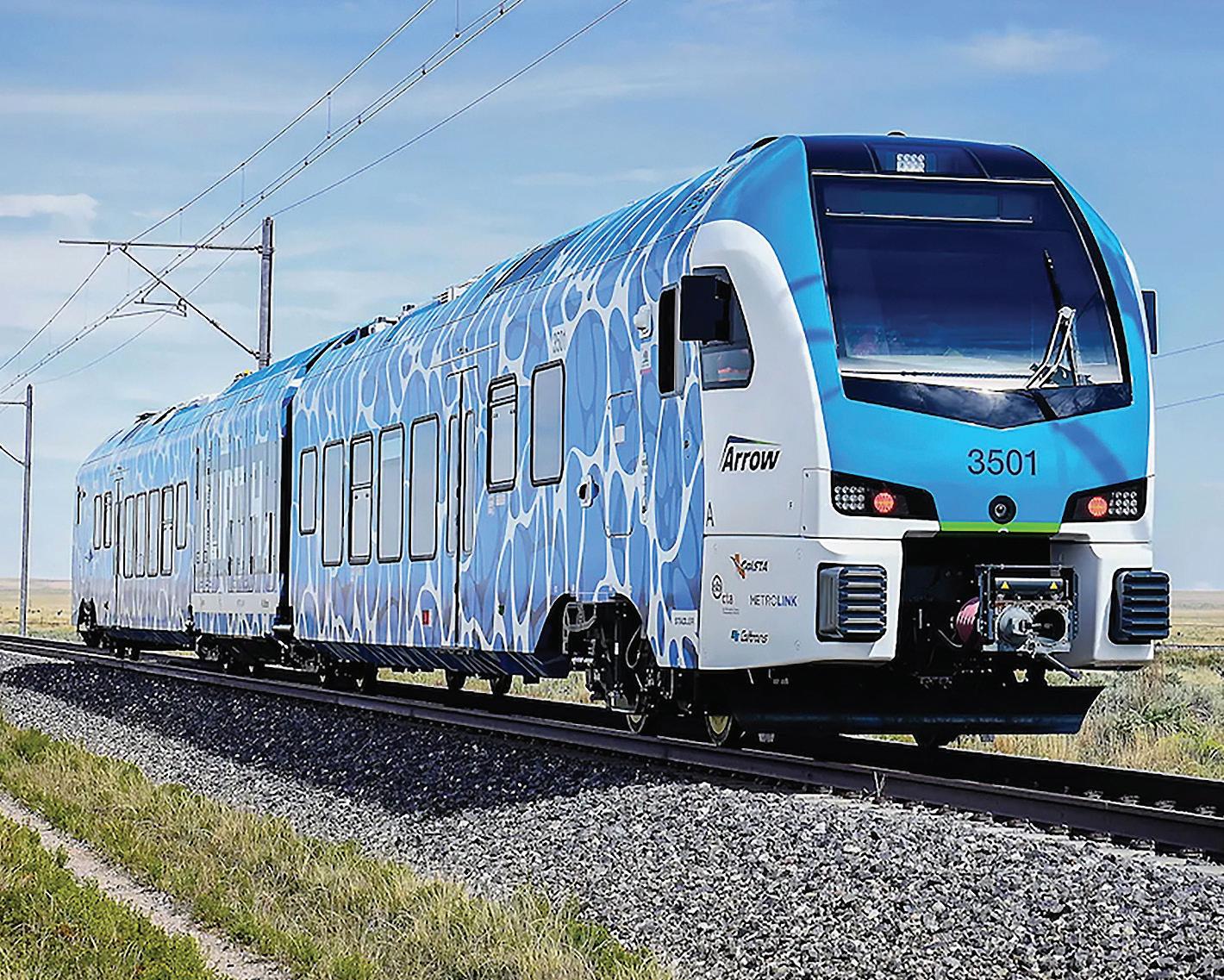
Caltrans is the first U.S. agency to employ the technology.
BY JOANNA MARSH, CONTRIBUTING EDITOR
Just this past September, something historic happened in the high desert of Southern California: The first hybrid hydrogen fuel cell (HFC) battery-electric passenger train in the U.S. began carrying passengers.
On Sept. 13, the San Bernardino County Transportation Authority (SBCTA) Zero Emission Multiple Unit, nicknamed ZEMU, began operating on a nine-mile stretch between San Bernardino and Redlands. ZEMU, which uses a hybrid hydrogen and battery technology for propulsion and emits only water vapor, is the culmination of a multi-year effort to bring such trains to California. The technology underwent testing in Switzerland following a
showing at InnoTrans in 2022, and then a four-car trainset headed to the Transportation Technology Center in Pueblo, Colo., for further testing. SBCTA began testing it on the area’s network in the summer of 2024.
Switzerland-headquartered Stadler Rail developed the technology. Stadler Project Manager Kaden Killpack tells Railway Age that “Stadler’s first hydrogen vehicle is performing well in San Bernardino, and we are grateful for our partners and customers who were heavily involved in introducing this technology to the U.S. passenger rail market.”
While Stadler’s HFC trainset may be the first of its kind in the U.S., it’s not likely that it will be the last. In February
2024, state agency Caltrans ordered six more, with the first of these expected to enter revenue service in 2027 on other intercity and regional rail lines. Caltrans’ $127 million contract with Stadler is part of a $10 billion, multiyear effort to bolster zero-emission vehicle use and infrastructure in the state. The total number of HFC trainsets is 10; all are expected to be in service by 2028.
“The U.S. seems to be the most interested market in HFC rail vehicles currently,” Killpack says. “Countries where few rail routes are equipped with OCS (overhead catenary system) electrification, like the U.S., are most suitable to deploy this kind of technology.”
Just when more HFC passenger trains will run on U.S. networks remains unclear, as the technology is not a priority of the POTUS 47 Administration. The White House recently pulled funding to develop hydrogen hubs in western U.S. states, including California. Port of Los Angeles Executive Director Gene Seroka confirmed in the port’s monthly media briefing that California lost its federal funding to develop the hub.
But even though a timeline for passenger trains using hydrogen in the U.S. is unclear for now, the technology is being refined in Europe and could be transferable to the U.S. one day. “We have a proven technology in Europe that could potentially address North America’s needs,” French rail developer Alstom tells Railway Age . Interest in zero-emission solutions, including hydrogen and battery-based, has grown across North America in the past five years, particularly for greenfield commuter or regional lines, according to the company.
Indeed, compared to diesel trains, Alstom says its hydrogen trains allow for a reduction of up to 700 tons of CO2 per train per year, and emit less noise compared to diesel, while their performance, such as their acceleration and speed, is comparable.
“The transport sector represents nearly 25% of world-wide emissions from fuel combustion. It is inevitable: Many countries have set targets to phase out diesel, particularly in Europe and India, to meet climate goals,” Alstom says. For instance, around 10,000 diesel trains will need to be replaced in Europe by 2035, representing around 80% of the worldwide fleet. Because of this, Europe is a potential market for hydrogen trains.
Alstom already has HFC trains operating in Europe. In Germany in 2022, its Coradia iLint™ trainsets started passenger service, marking the first time worldwide that hydrogen trains were being used for passenger rail. The company has delivered 41 Coradia iLint™ hydrogen trainsets to two German rail agencies: 27 to RMV in the state of Hesse and 14 to LNVG in the state of Lower Saxony.
“As a pioneer of this new technology, Alstom has faced some challenges
in terms of operational stability,” the company says. “To enable stable and smooth passenger service, we’ve been working on a new generation of fuel cell technology, which will be gradually implemented beginning later this year.”
Italy and France are other countries set to use Alstom’s HFC trainsets: FNM (Ferrovie Nord Milano) in Italy’s northern region of Lombardy and FSE (Ferrovie del Sud Est) in southern Italy ordered 16. In France, national railway company SNCF ordered 12 Coradia Polyvalent™ dual-power units on behalf of four French regions in 2021. These trainsets combine catenary-electric and HFC traction equipment. The Italian trainsets received support from the European Union’s IPCEI Hy2Tech program; the first is expected to be operational for passengers in the coming months. The French trainsets, originally built at Alstom’s Reichshoffen site in France, are now being assembled by CAF France.
“In general, Europe has the infrastructure to support hydrogen trains. So far, however, the number of refueling stations specifically designed for them corresponds to the comparatively small number of hydrogen train projects. Only an increasing demand will ensure a growing supply,” Alstom says. In North America, Alstom collaborated with Chemin de fer Charlevoix and Harnois
Energy to offer passenger service using HFC trains between Quebec City and Baie Saint Paul in the summer of 2023.
Killpack says that while ZEMU, also known as the FLIRT H2 in the U.S., is the only hydrogen-powered Stadler train in operation, the company has a demonstration train, the RS ZEO, currently in commissioning and testing in Germany. Stadler also has customers in Italy who have ordered hydrogen trains, although they are not yet in passenger service. The U.S. ZEMU “will enable us to study performance,” Killpack says. “As with any new vehicle type, we will continuously improve its design and performance with new vehicle orders. Stadler’s upcoming vehicles will continue to prioritize resiliency, reliability and redundancy to ensure great performance.”
Meanwhile, another company, Germanybased Siemens Mobility, has produced the Mireo Plus H, a hydrogen train model that has been deployed in Germany.
Although HFC passenger trainsets are in operation, there are several challenges hindering widespread adoption. Alstom sees challenges in two areas. For starters, “the cost of hydrogen has continued to increase in many markets across the U.S. and Canada, making the cost of power significantly higher than it would be
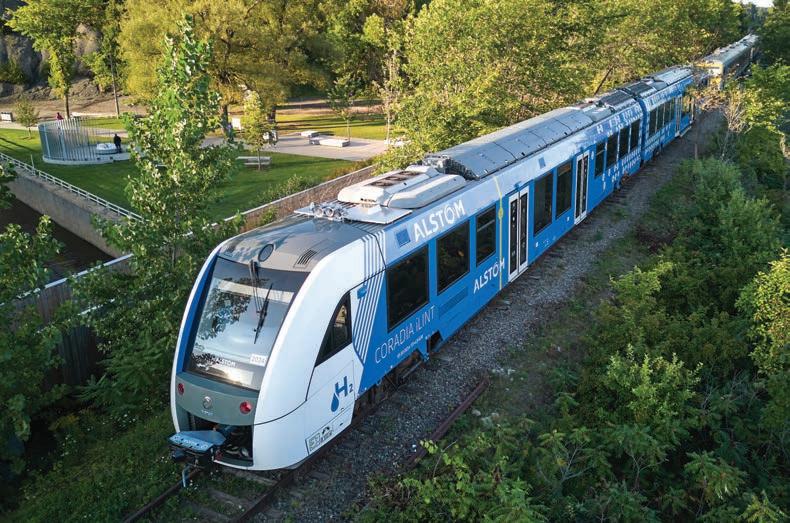
with either diesel or electrified systems,” the company says. “Also, the infrastructure requirements to implement a hydrogen or battery solution remain daunting for many agencies, particularly in cases where the agency operates on a host railroad. Both challenges would need to be meaningfully addressed to see greater uptake of zero emissions technologies.”
“The cost of electrification has gone up,” notes Killpack. “In the U.S., we’ve seen costs as high as $15-$17 million per track-mile, just for the OCS, traction power and signal upgrades. For smaller routes or routes with low-density or lowfrequency service, the hydrogen vehicle option is far more economical.”
Nonetheless, Alstom, Stadler and Siemens still see plenty of opportunities to further progress in hydrogen trains in
passenger and freight applications.
Alstom says it has designed the Traxx Shunter H™, which it describes as “an innovative new-build switcher solution.” It has received funding from the French government’s France Relance, France 2030 and the European Union’s NextGenerationEU, as part of the IPCEI Hy2Tech program. Alstom adds it has been working with German partners on re-tractioning of a diesel switcher locomotive to hydrogen. A retrofitted Alstom unit was converted from diesel to hydrogen drive, powered by hydrogen direct combustion, and began operations in September in Salzgitter, Germany. “With this research project, we are once again pioneering the use of hydrogen in rail transport,” says Alstom Vice President of Services, Central and Northern Europe
François Muller. “We are expanding the vehicle modernization spectrum with a doubly sustainable approach. Thanks to this solution, our customers can switch to emission-free operation without having to replace their existing fleet.”
Alstom is upbeat about a future with more hydrogen trains. “As the industry gains a deeper understanding of the entire ecosystem for each solution, including the technology and the infrastructure, operations, maintenance and repair, resource experience, training and availability and other external factors, the whole value chain will be optimized for better performance and reliability,” the company says. “This will help to close the maturity gap between hydrogen fuel cell/battery propulsion and traditional propulsion over time.”
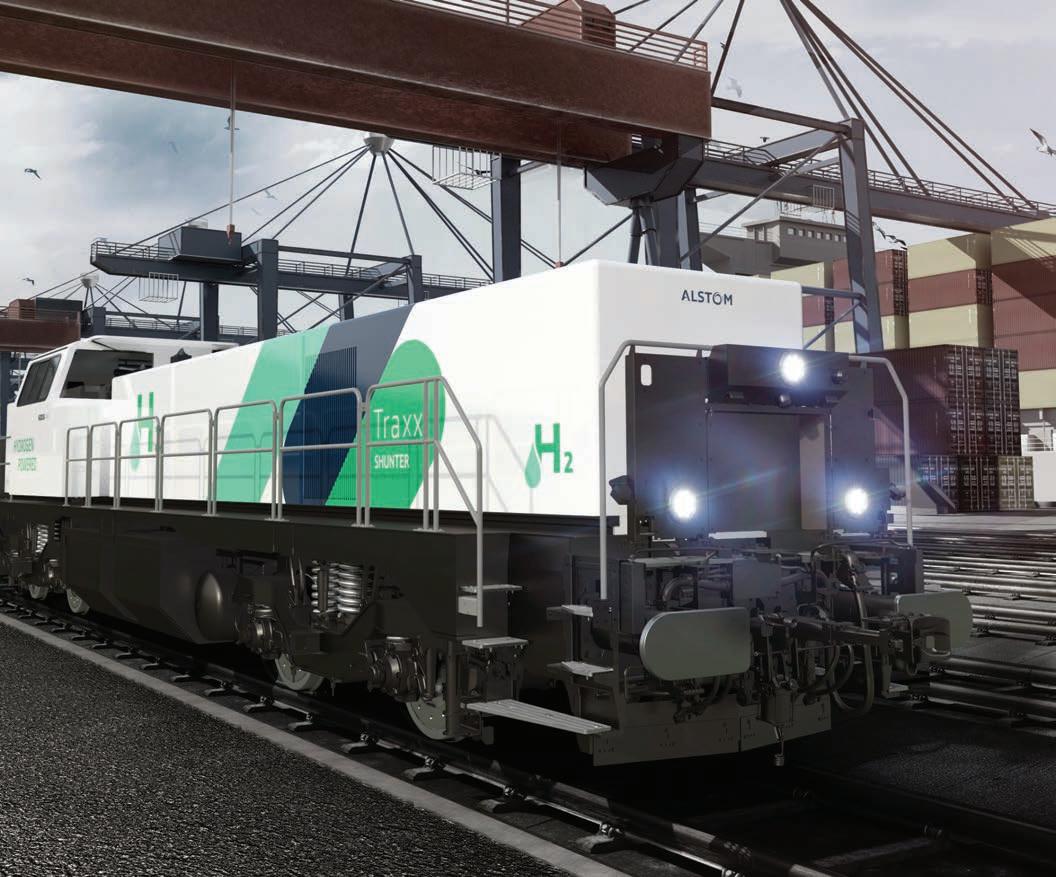




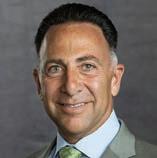
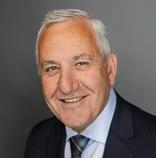
Loram’s HP SBC machines are self-propelled, equipped with twin, 30-inch wide, high-capacity digging buckets to clean ballast from the tie ends outward to the edge of the ballast section, typically digging 8 inches below bottom of tie.
BY CAROLINA WORRELL, SENIOR EDITOR
High-production, computerdriven track machines and inspection vehicles perform one of the most critical of maintenance-ofway (M/W) functions: keeping ballast in a state-of-good-repair to provide a smoothrunning surface with excellent drainage. Any experienced railroad civil engineer will tell you that track is only as good as the ballast holding it in place. Ballast, which is dumped, spread, tamped, profiled and cleaned, serves many purposes, the most important of which is drainage.
Following is a roundup of offerings from suppliers who responded to Railway Age’s inquiries about how they are continuing to innovate and improve ballast maintenance technology.
Launching in the U.S. this year, the new


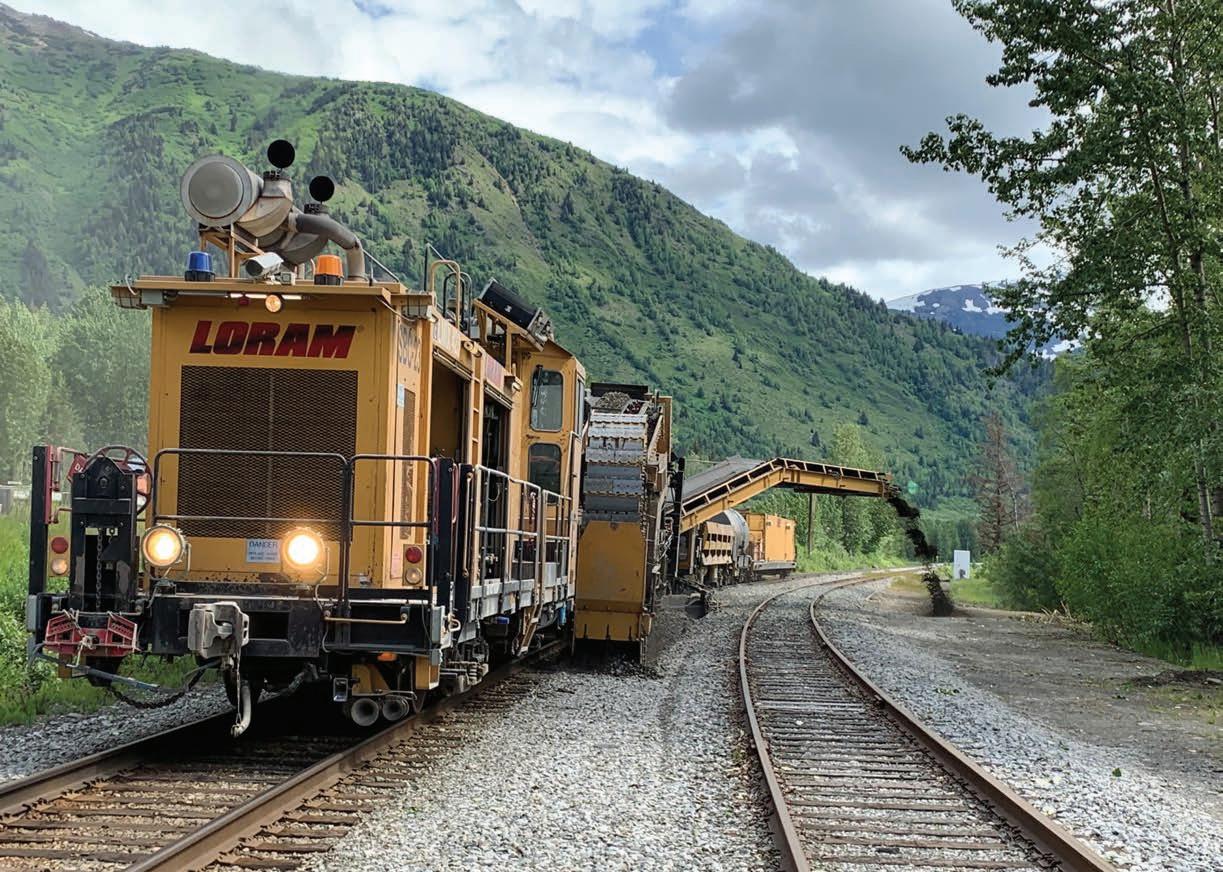
Brandt RTB100 Hi-Rail Backhoe builds on previous models to deliver “a powerful, flexible, and efficient solution” for ballast maintenance and inspection support— whether digging out fouled ballast, cleaning drainage ditches, or performing general maintenance of way work, the company tells Railway Age Brandt, which it notes “has decades of experience designing M/W solutions,” went to “the experts—rail operators and contractors—when creating the RTB100 to understand their pain points.” Operators, the company says, expressed frustration with inefficient and costly M/W solutions and asked for machines that can do more with less. “That’s why the Hi-Rail Backhoe delivers more productivity and machine versatility to improve return on investment (ROI),” Brandt says.
Built on a John Deere 320P chassis, the RTB100 pairs Brandt’s purpose-built hi-rail
gear with Deere’s proven reliability to give rail operators “unmatched performance and uptime in demanding track environments,” the company says. The RTB100 supports a wide range of attachments (buckets, grapples, tie handlers) powered by highflow hydraulics, “enabling quick response and high performance across ballast and drainage tasks.” The machine’s 24.9 mph travel speed and three-minute rail-to-road conversion “make it ideal for inspection and spot maintenance work—keeping crews moving efficiently between job sites.”
Loram provides a complete suite of ballast maintenance tools for customers from initial inspection through to completed maintenance programs. Using a combination of Ground Penetrating Radar (GPR), LiDAR, track geometry data, and other inputs, Loram says it can deliver to
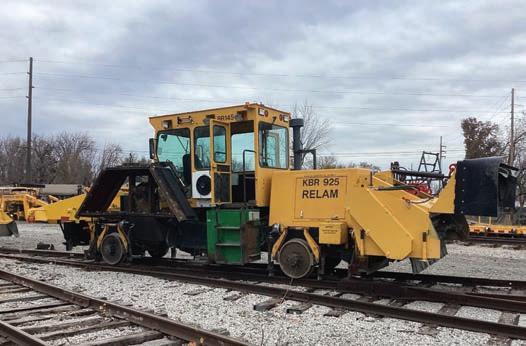
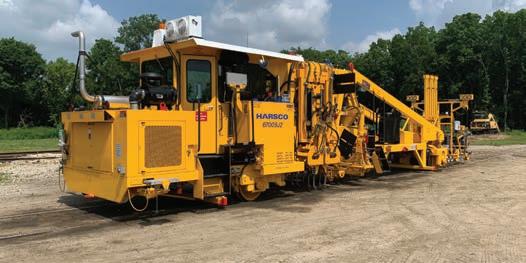
















customers “a comprehensive assessment of current track conditions and prioritized work plans that can be integrated into existing Geographic Information Systems (GIS).” Additionally, analysis can be done to determine the effectiveness of maintenance that has already been done, as well as predict future maintenance needs.
When it comes to executing ballast maintenance, Loram says it “has tools to remediate both internal and external drainage issues. Internal drainage is most effectively maintained with shoulder ballast cleaning. Loram utilizes the highest production shoulder ballast cleaners available, excavating and screening shoulder ballast down to the bottom of the ballast layer. The integrated scarifier is used to pull fouled ballast out from under tie ends, breaking up mud caps that prevent water from draining out of the crib of the track. Because there is minimal disturbance to ballast structure under the tie when shoulder cleaning is performed, trains typically run at track speed directly after an SBC with no slow order required.”
In areas where complete ballast renewal is required, Loram’s Track Lifter Undercutter (TLU) and Undercutter Cleaners (UC) deliver “best-in-class productivity,” the company tells Railway Age. Using patented digging wheel technology these machines cut in to track unaided, “dramatically reducing the amount of time, equipment, and labor required to start and finish an undercutter job.” The TLU and UC
Brandt’s RTB100 supports a wide range of attachments powered by high-flow hydraulics.
machines are also capable of high-lift, high-speed track lifting with the capability to lift up to one foot in a single pass at speeds more than three miles per hour.
When ballast excavation is required for short sections of track, or near specialty track assets (bridges, crossings, turnouts, tunnels, etc.), Loram’s LRV vacuum excavator is “the railroads’ machine of choice.” The LRV pairs vacuum power with a manipulator that can apply 5,000 pounds of force at the tip of the nozzle and is able to excavate even the most fouled and cemented ballast in hard-to-reach locations. In addition to excavating in tight clearances on ballast deck bridges, in tunnels and around switches and crossings, the LRV can perform mud spot undercutting and removal, cross drain or trench digging and drain cleaning. Because there are no moving parts associated with vacuum excavation, ballast “can be removed from critical, typically expensive components without any damage.”
When external drainage maintenance is required, Loram’s Badger Ditcher and DC Max Ditchers are :the industry standard for high-speed ditch creation. These highefficiency machines can excavate material at up to 800 tons per hour to quickly restore drainage and direct water away from the track. A clean and consistent ditch diverts runoff away from the track quickly, ensuring soils do not become saturated and less stable and is part of any comprehensive drainage solution.”
“Year over year the ballast maintenance business is consistent,” Loram tells Railway Age. “Customers understand the value of a solid ballast maintenance program and the importance it has in ensuring consistent operation of revenue service trains.”
Loram says it is also currently developing a next generation vacuum excavation machine, the Loram Track Vac (LTV), which will be entering the company’s revenue service fleet in early 2026. “Customers are looking for ways to get boots off the ballast and put personnel up on machines, or in cabins, wherever possible,” Loram notes.
Miner’s AggreGate® line of ballast outlet gates, control systems and accessories is available in electric, air-powered and manual operating models. AggreGate outlet gates are suitable for both retrofit and new car systems.
“Miner’s AggreGate is proven to be a safe and efficient method of unloading ballast, whether the railroad wants a simple manual unloading or a fully automated standalone system,” says Miner Enterprises Director of Sales Paul Aspengren. “More than 7,200 carsets of Miner AggreGates have been sold into service since it first received AAR certification more than four decades ago.”
The newest model, the solar-powered stand-alone electric AggreGate, “enables railroads to bring more efficiency and flexibility to their maintenance-of-way operations,” according to the company. “By integrating solar power into each railcar, it enables independent operation of every car from anywhere within the ballast train. This eliminates the need for grouping manual and automatic cars.”
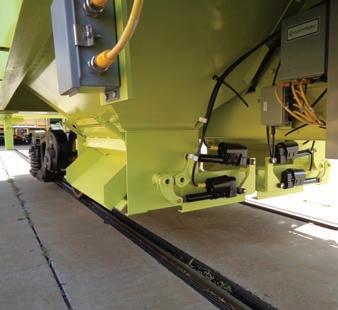
Miner’s dual cylinder airpowered AggreGate is available in either pushbutton or remote-control operation.


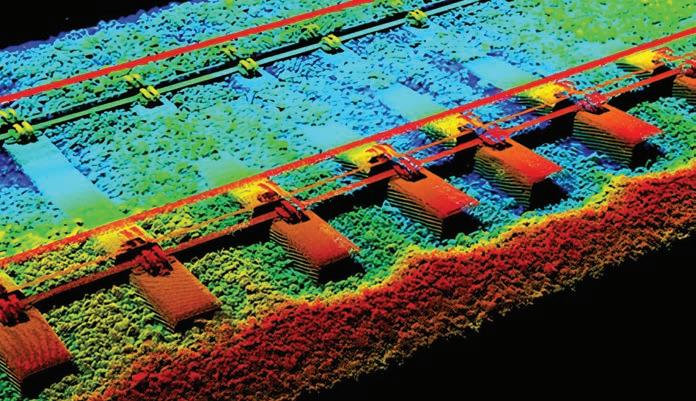
The AggreGate remote-control system features a push button override that allows individual car and gate selection. Operators “can effectively ballast inside, outside or both sides of the rail simultaneously.”
The dual cylinder air-powered AggreGate is also available in either pushbutton or remote-control operation. The operator
can select a specific car and gate, as well as control ballast flow, “ensuring more accurate ballast discharge from distances as great as 300 feet.”
The manual AggreGate is available with transition sheets designed to enable new or retrofit application to any open-top hopper car. It features a three-position handle “for

easy opening and closing of doors.” Spring tension holds the large guillotine door in position at any opening for controlled flow of ballast. According to the company, Miner AggreGates “are the most specified ballast gates in the industry.”
“As railways look ahead to 2026, they face growing pressure to maintain expanding networks safely, efficiently, and sustainably—often with fewer resources and limited maintenance windows,” Pavemetrics® tells Railway Age
Pavemetrics®, through its Railmetrics® brand, part of Eddyfi Technologies’ Automated Vision Systems,” is helping rail operators meet those challenges” with its LRAIL™ system.
“In today’s market, railways are seeking ways to improve accuracy, repeatability, and speed of track inspections while reducing manual work and disruptions,” the company notes. “LRAIL combines high-speed 3D laser technology with





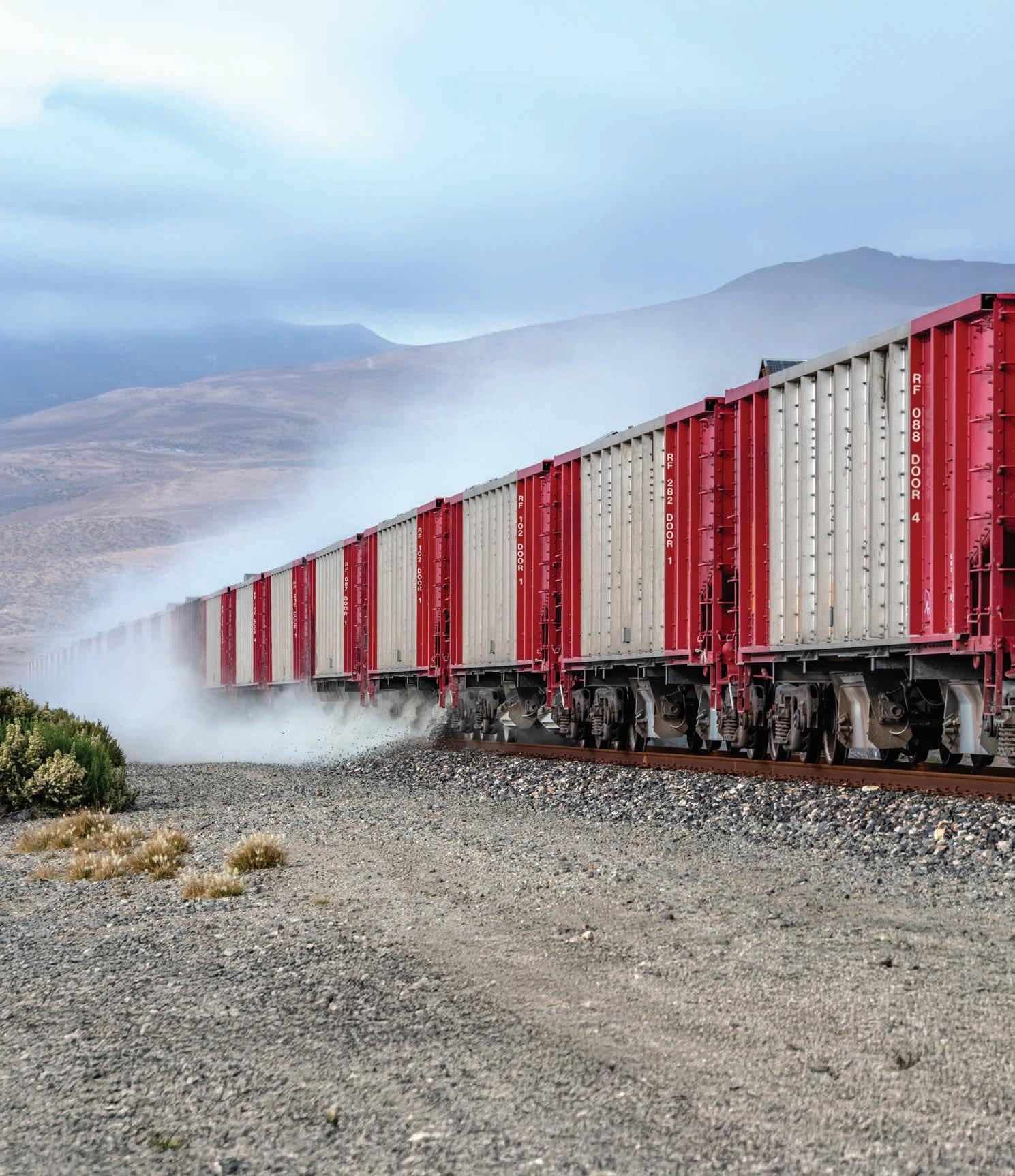

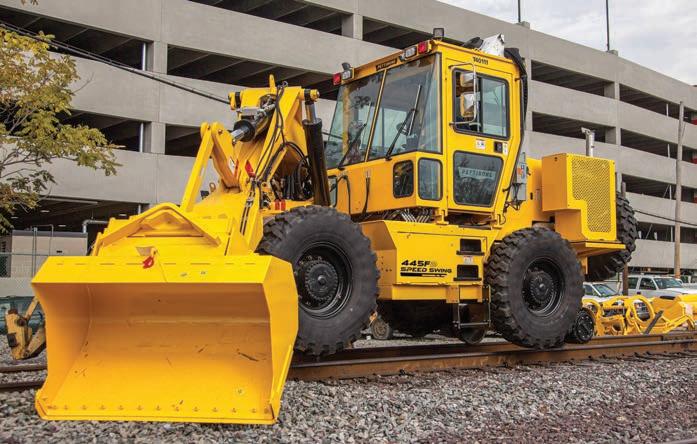
AI-driven analytics to automatically measure every critical track component— including ballast, crossties, rail, fasteners, and turnouts—at full track speed and with zero disruptions to operations.”
For ballast inspection, LRAIL provides
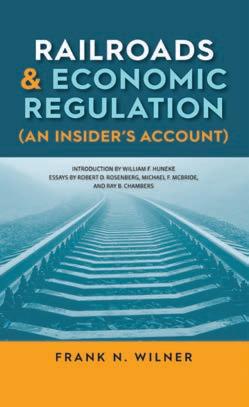
fuel tank.
a continuous 3D view with a transversal field of view of 11.5 feet, “allowing a clear assessment of ballast levels and shoulders beyond the ends of crossties. Automated analysis identifies areas of insufficient or excess ballast, as well as fouled ballast
such as mud spots, generating configurable reports aligned with each railway’s standards.”
Recent developments at Pavemetrics® focus on data processing and analysis algorithms, “enabling timely insights and supporting more proactive, predictive maintenance strategies,” the company says. “Ultimately, railways want data they can trust—objective, comprehensive information that helps them make faster, safer, and smarter maintenance decisions.” LRAIL, Pavemetrics® adds, “delivers exactly that: automated, reliable insight that makes inspections safer, decisions clearer, and railways stronger.”
The Pettibone Speed Swing 445F2 is described as “a versatile machine that utilizes numerous rail maintenance attachments, including a handful that are designed for efficient ballast work.”
A track cleaning bucket can be used to clear excess ballast as the machine travels

Upon the heels of the proposed UP-NS merger, Frank N. Wilner shares his inside account of the development, failures, and successes of railroad economic regulation. Spoiler alert: It ain’t perfect.
Join Wilner, former White House-appointed chief of staff of the Surface Transportation Board, as he weaves through the pivotal decisions that helped shaped the economic environment railroads face every day. Spoiler alert: It ain’t over yet.
Don’t lose out. Order your copy of Railroads & Economic Regulation today!
“Frank Wilner has written an exhaustive history of our nation’s railroads and the complicated, intriguing and often confusing federal regulation and lawmaking.”
- Nick Rahall Member of Congress (West Virginia, 1977-2015)
“As a new member of the Surface Transportation Board, the book would have been indispensable to me. It places today’s regulatory issues into context based on their history and paints a picture of the characters who have made the railroad world what it is today.”
- Debra L. Miller Member, Surface Transportation Board, 2014-2018

on the rails. The Speed Swing can also use a switch broom to sweep switches and remove ballast and debris from the area. For rail crossing maintenance, the Speed Swing often uses rail mat tongs to place mats, followed by a general-purpose bucket for scooping and laying down ballast where needed.
When equipped with an AAR car coupler, a Speed Swing can also pull ballast-filled railcars.
The Speed Swing 445F2 is powered by a 163-horsepower Cummins Tier 4 diesel engine and includes a 49-gallon fuel tank, a 29% increase in capacity over the previous model. Offering a maximum front load capacity of 10,000 pounds and maximum side load capacity of 8,000 pounds, the 445F2 features 180-degree boom rotation. The Speed Swing can travel up to 25 mph on hi-rail and 20 mph with all-terrain rubber tires.
“With shorter work windows, railroads need reliable, high-capacity solutions for ballast cleaning and maintenance,” Plasser American tells Railway Age. The company offers a full fleet of machines that ensure precise track geometry and track availability.
“Undercutting and shoulder cleaning remain the best way to ensure clean, unfouled ballast,” says Plasser American, whose RM802, “the largest undercutter in the U.S.,” can work up to 2,000 feet per hour with pre-dumped ballast. The RM80-800 is designed to work at high speeds, even through fouled and muddy conditions. The RM80-800 also includes track lifting and lining devices to allow the machine to clear track side obstacles.
For shoulder cleaning, Plasser American offers the FRM85 and FRM802 machines.
“Our Shoulder Ballast Cleaners are designed to cut the entire shoulder width and full depth in one single pass to provide a productive and efficient operation,” the company tells Railway Age. “Offered with a single shaker box, or for higher performance, a double shaker box configuration, these units maintain clean ballast shoulders, promoting proper drainage and reducing the frequency of maintenance cycles.”
Plasser American’s next-generation GRM4000 is the newest tamper in the company’s high production GRM Line. The GRM4000 offers a modified design with a two-tie tamping unit “to significantly increase the production rate and improved
weight distribution designed to be transported by road trucks or flat cars,” the company notes. Furthermore, the addition of the Autonomous Remote Stabilizer Upgrade Kit “links” the new GRM4000 remotely to the popular Plasser Dynamic Track Stabilizer PTS90C. This kit consists of two modules—one is installed on the existing stabilizer and the counterpart on an independent lead machine, such as a GRM4000. Once installed, the stabilizer can be fully controlled by the lead machine operator and requires no additional operator. This remote upgrade, Plasser American says, “keeps headcount low and performance high, while radar safety solutions ensure safe operation on track. Field tests proved the feasibility and safety of the new upgrade kit and delivered the expected results. This new upgrade kit supports the industry’s commitment to safety and efficiency.”
“Ballast maintenance remains a core, recurring expense for railroads, and the right mix of high-performance machines, data-driven planning and targeted investments will lead to life-extension value from their infrastructure,” the company notes. “Plasser American’s ballast cleaning and surfacing equipment are established tools in railroad’s toolboxes designed to reduce track downtime, lower lifecycle costs and help networks return to service sooner after heavy work.”
The original Fiscal Year 2025 forecast for the overall construction industry was down 5% to 10%, RCE tells Railway Age . “The year has tracked along this path with lower purchase volumes and a shift to rental demand. The primary concern was the impact of tariffs on the overall economy. Thus far, the impact has been minimal as many of the OEMs have absorbed price increases. It is estimated that the industry will be flat or grow slightly in 2026, and the outlook is more positive. In Fiscal Year 2026, tariffs are estimated to impact pricing by 3% to 5%.”
In September, at the American Railway Engineering and Maintenance-of-Way Association (AREMA) show, RCE unveiled the GlideRail Backhoe, “a purpose-built John Deere backhoe equipped with RCE’s new hi-rail gear system engineered for unmatched operator control, smooth
transitions, and maximum versatility.”
The GlideRail, the company says, “represents the next evolution in RCE’s industry-leading lineup of hi-rail equipment, designed to help rail contractors and maintenance teams get the job done—faster, safer and smarter.”
“Our customers asked for a hi-rail backhoe that could handle everything— from tight urban rail maintenance to heavy-duty tie replacement—and transition seamlessly between on- and off-track work,” says Brian Benck, President at RCE Equipment Solutions. “The GlideRail delivers exactly that. It’s simple to operate, built with high quality and durability in mind, and designed to keep crews moving.”
Key features of the GlideRail:
• I ndependent front and rear controls for seamless operation.
• Automatic down-pressure relief on the rear rail gear.
• Front oscillating hi-rail axle for smooth on/off-track transitions.
• B olt-on design for easy installation and serviceability.
• Maintains full loader-arm functionality in hi-rail mode.
• Utilizes existing OEM stabilizers—no added complexity.
• C ompatible with John Deere 320P, 320P HL, and 310G (No DEF) models.
• Backed by JDLink™ telematics, 500-hour engine service intervals, and the nationwide John Deere dealer network.
Optional attachments include a generalpurpose bucket, rotating tie head, tamper head, forks and a cold air blower, “giving contractors the flexibility to configure the GlideRail for nearly any rail application,” says RCE, which also announced a partnership with GKD in 2025 that includes technology features added to the company’s Railavator machine lineup: enhanced vision systems, height and slew settings, and obstacle detection. This technology, RCE says, “helps with safety initiatives on the tracks.”
As customers continue to look for equipment versatility, RCE says next year it will have one of its “biggest product announcements in the company’s history,” though it “is not ready to talk about it just yet.”

BY MATT WENGER, SENIOR ENGINEER AND BRIAN LINDEMAN, SENIOR ENGINEER, MXV RAIL
In North American interchange, journal roller bearings removed from an axle, whether for bearing-, wheel- or axlerelated causes, must go through a reconditioning process before being reused. This process includes visually inspecting rolling surfaces in search of either repairable or condemnable defects. MxV Rail has tested the effectiveness of a nondestructive evaluation (NDE) technology to enhance the
inspection. These ECA indications ranged in size from 0.003 to 0.048 in2 (2 to 31 mm2). The seven suspect cups plus eight other non-indicating cups were reassembled with new roller assemblies, seals and grease for subsequent rig testing at the University of Texas Rio Grande Valley (UTRGV).
Rig tests were run for up to 240,000 miles with intermediate teardown inspections every 60,000 miles to assess cup raceway health. The rig was
of 87%, or 13 out of 15 cups.
Figure 1 (opposite) showcases one cup that showed two separate ECA indications approximately 1.3 inches apart. The red circles illustrate where the ECA indications were located on the raceway before and after 17,120 miles of rig testing. Severe spalling enveloped the raceway where both indications were sensed.
The single false positive result occurred on the cup with the smallest
MxV Rail has tested the effectiveness of an NDE technology to enhance inspection of bearing cups and find flaws that may otherwise go unnoticed and shorten the bearing’s useful life.
inspection of bearing cups (or outer races) and find flaws that may otherwise go unnoticed and shorten the bearing’s useful life. (1)
Under the Association of American Railroad’s Strategic Research Initiative (SRI) program, MxV Rail used a commercially available flexible eddy current array (ECA) technology to search for minute surface and nearsurface raceway flaws on newly reconditioned bearing cups. These cups then underwent accelerated life testing in a laboratory bearing rig to determine if the suspected flaws would develop into spalls within 240,000 miles of the simulated service. The theory was that cups with ECA indications would spall during rig testing while those without ECA indications would not spall.
MxV Rail scanned 192 bearing cups using ECA technology and found seven with indications of surface or subsurface cracks that were not detected during a normal reconditioning
configured to operate at an equivalent train speed of 85 mph to accelerate testing. The bearings were subjected to a constant vertical load of 34,400 pounds to simulate the GRL (gross rail load) of a fully loaded 110-ton car. Any ECA indications, if present, were aligned directly under the vertical load for the duration of testing to evaluate the durability of the raceway material in those suspected flaw locations. UTRGV monitored the temperature and vibration of the bearings to sense if and when spalling occurred.
Of the seven cups with ECA indications, six spalled within 41,500 miles, while one survived the test, giving the ECA inspection an 86% true positive rate. Seven of the eight cups without ECA indications endured the 240,000mile test without spalling, resulting in a true negative rate of 88%. The presence or absence of ECA indications predicted whether a cup would spall prematurely with an overall accuracy
ECA indication (0.003 in2). Ongoing research at MxV Rail is focused on the effectiveness of the ECA technology in accurately detecting small flaws and determining whether such flaws reduce bearing life.
The Technology Digest upon which this article is based can be found in our eLibrary along with more than 1,000 other publications describing the railway research, testing and analysis from the SRI program. The MxV Rail team has the software, laboratories, and test tracks to meet the railway industry’s needs for both publicly accessible research and contractual tests for individual customers. We invite you to learn more at www.mxvrail.com.
1. Wenger, M., A. Poudel, and B. Lindeman. (2025). “Reconditioned Bearing Performance – Phase 3.” Technology Digest TD25-005. MxV Rail/AAR. Pueblo, Colo.
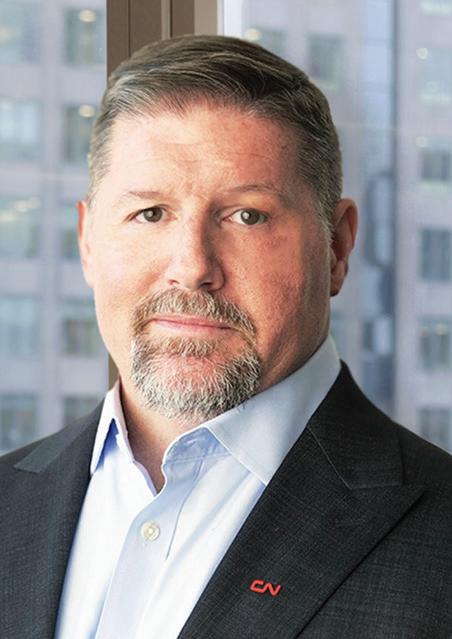
HIGH PROFILE: CN last month named Patrick Whitehead as Executive Vice President and Chief Operating Officer. Whitehead, who had served previously as CN’s Executive Vice President and Chief Network Operating Officer since October 2023, succeeds Derek Taylor, who has left the company. With more than 30 years of railroad experience, more than 25 of which have been in management positions in Transportation and Mechanical, Whitehead joined CN in 2021 as General Manager in Chicago, Ill., following service at Norfolk Southern as Vice President Transportation. He was appointed Senior Vice President Network Operations in June 2022. Whitehead holds a Master of Science degree in Transportation Management from the University of Denver and has completed Wharton School of Business Advanced Management and Corporate Governance programs.
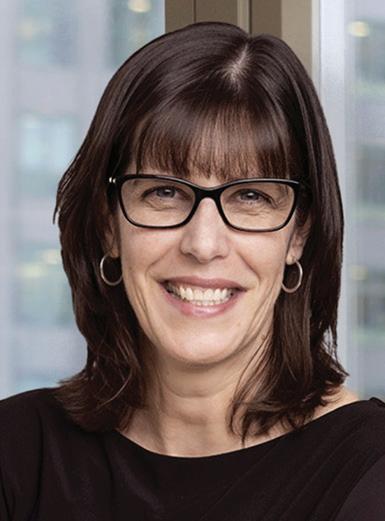
HIGH PROFILE: CN last month appointed Janet Drysdale Executive Vice President and Chief Commercial Officer. She had been serving as Interim Chief Commercial Officer since July, following the departure of Remi G. Lalonde. Drysdale spent the first decade of her nearly 30-year career at CN in a variety of roles in Sales and Marketing. She held executive positions in Investor Relations, Finance, Corporate/Business Development, Sustainability, and most recently as Chief Stakeholder Relations Officer. She is now permanent Chief Commercial Officer, a role CN said “is a critical executive position overseeing CN’s strong and experienced team responsible for sales and marketing.” Based in Montreal since 1997, Drysdale earned an Honors Bachelor of Science degree from Queen’s University and an MBA from McGill University.
Pinsly Railroad Company President and CEO Ryan Ratledge has been appointed to the Surface Transportation Board RSTAC ( Railroad-Shipper Transportation
Advisory Council) as the Small Railroad Representative, for a threeyear term. RSTAC provides advice and recommendations on regulatory, policy and legislative matters to STB Board
Members; the Secretary of Transportation; the Senate Committee on Commerce, Science and Transportation; and the House Transportation and Infrastructure Committee. The STB opened nominations for the role in July. R atledge brings more than 30 years of freight rail experience to RSTAC. Since joining Pinsly in 2022, he has led the company’s expansion from two to nine short lines through strategic acquisitions that also added warehousing, transload and trucking capabilities. “I am honored to represent Pinsly Railroad Company and small railroads across the country on the RSTAC committee,” said Ratledge, who was selected by Railway Age readers as one of ten Most Influential Leaders for 2025. “I look forward to the opportunity to positively impact the industry by contributing to RSTAC’s objectives.” Pinsly’s network includes the Florida Gulf & Atlantic Railroad, Grenada Railroad, Hondo Railway, Camp Chase Rail, Chesapeake & Indiana Railroad, Vermilion Valley Railroad, Pioneer Valley Railroad, North Florida Industrial Railroad, and its newest short line: Georgiana & Andalusia Railroad.
Anna Lynn Smith, AICP, has rejoined HDR Inc. as Intercity and High-Speed Rail Lead. The practice encompasses planning, engineering, architecture, systems, signal engineering, zero-emissions mobility, strategic advisory services and roadway disciplines. Based in Philadelphia, Smith will oversee strategy, client engagement and market position for intercity and high-speed rail across rail and transit markets. Her work will primarily be focused on the U.S. and Canada. Smith has more than 30 years of experience working on a variety of projects with state and federal agencies, metropolitan planning organizations, cities, transit agencies, railroads and other clients across North America. Most recently, she was Vice President of Planning and Strategy at Amtrak, where she directed strategic planning across longrange, five-year and annual initiatives, guiding service development, infrastructure planning and sustainability goals. Previously, Smith served in regional and national roles at HDR.





FRA is withdrawing the direct final rule titled ‘‘Federal Railroad Administration Accident/Incident Investigation Policy for Gathering Information and Consulting with Stakeholders,’’ (the Rule) which was published on October 1, 2024. Effective July 22, 2025.

49 CFR 215. Prescribes the minimum safety standards for freight cars allowed by the FRA. Includes safety standards for freight car components, car bodies, draft system, restricted equipment and stenciling. Softcover, spiral. Updated 7-1-25
BKFSS Freight Car Safety Standards $12.00
Order 50 or more and pay only $9.90 each

49 CFR 231. General requirements for safety appliances including: handbrakes, brake step, running boards, sill steps, ladders, end ladder clearance, roof handholds, side handholds, horizontal end handholds, vertical end handholds, and uncoupling levers. 106 pages. Softcover. Updated 7-1-25
BKSAS Railroad Safety Appliance $14.00
Order 50 or more and pay only $10.35 each

The Locomotive Safety Standards cover the laws governing inspections and tests, brake system, draft system, suspension, electrical, cabs and cab equipment plus more! Softcover. Spiral bound. Updated 7-1-25

49 CFR 232. Regulations and general requirements for all train brake systems, inspection and testing, periodic maintenance and training requirements, and end-of-train devices for Class I, II, and III railroads. Plus the introduction of new brake system technology. Softcover. 155 pages. Updated 7-1-25
BKBSS Brake System Safety Standards $21.00
Order 25 or more and pay only $17.50 each
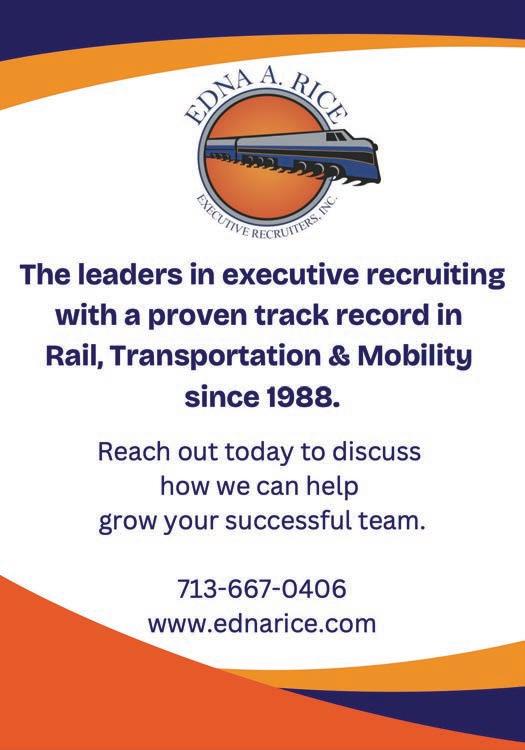




12. 6. Annual sub price: US $100/Intl $139 7. Complete mailing address of known office of publication: Simmons-Boardman Publishing Corporation, 1809 Capital Ave, Omaha NE 68102 -4905; Contact Person: JoAnn Binz, Circulation Mgr; Tel: 843-388-3808. 8. Mailing address of company headquarters: Same as above. 9. Full name and complete mailing address of publisher: Jonathan Chalon, Publisher, Railway Age, 1809 Capital Ave, Omaha NE 68102-4905 William C Vantuono, Editor-in-Chief, 1809 Capital Ave, Omaha NE 68102 -4905. 10. Owner: Simons-Boardman Publishing Corp, 1809 Capital Ave, Omaha NE 68102-4905; Arthur J McGinnis Jr, President, Simmons Boardman Corp., 1809 Capital Ave, Omaha NE 68102-4905. 11. None. 12. No change in preceding 12 months. 13. Publication Title: Railway Age 14. Issue date for Circulation data below: Avg. Oct 2024–Sept 2025; Actual Sept 2025. 15. Extent and Nature of Circulation. 15a Total Number of Copies: Avg. 17,037; Actual 16,563. 15b.1. Paid/Requested Mail Subscriptions: Avg. 12,874; Actual 12,100. 15b.4. Requested Copies Distributed by Other Mail Classes: Avg. 604; Actual 481. 15c.Total Paid and/or Requested Circulation: Avg. 13,478; Actual 12,581.15d.1 Non-requested Copies: Avg. 3,229; Actual 4,149. 15d.4. Non-requested Copies Distributed Outside the Mail: Avg. 172; Actual 170. 15e. Total Non-requested Distribution: Avg. 3,476; Actual 4,384. 15f. Total Distribution: Avg. 16,954; Actual 16,965. 15g. Copies not distributed: Avg. 83; Actual 45. 15h. Total: Avg. 17,037; Actual 17,010 15i. Percent Paid and/or Requested : Avg. 79.5%; Actual 74.2%. 16a. Paid/Requested Electronic Copies: Avg. 9,852; Actual 9,422. 16b. Total Paid/Requested Print + Req/Paid Electronic Copies: Avg. 23,329; Actual 22,003. 16c. Total Print Distribution + Req/Paid Electronic Copies: 26,805; Actual 26,387. 16d. Percent Paid/Request (Print + Electronic Copies): Avg. 87 0%; Actual 83.4%. 17. Publication will be printed in the November 2025 issue. 18. Signature/Title: Jo Ann Binz, Circulation Mgr , Date 10/01/2025 - PS Form 3526-R.
412-385-0108
917-972-3490
817-867-6250
888-888-5909
888-333-6370
904-359-3200
214-979-1111
630-561-4755
203-202-8900
800-343-7188
816-901-4038
000000000
334-387-5669
412-227-2739
763-478-2627
312-322-6428
212-620-7200
855-667-3655
904- 423-2540
561-448-2050
757-543-3526
682-223-6897
402-346-4300
770-335-9273
800-631-4420
312-853-3223
312-347-5705
402-544-3560
412-825-1000
620-331-2230
sales@stucki.com
michelle.stein@alstomgroup.com
media@bnsf.com www.cn.ca cpkcr.com csx.com www.dart.org
Mtonn@freightcar.net corpcomm@gwrr.com gbrx.info@gbrx.com amcclain@hrsi.com www.hitachirail.com knox@knoxhershaw.com
www.NorfolkSouthern.com www.patriotrail.com www.pinsly.com

Th ere’s a reason the phrase “to be railroaded” means to be coerced or forced into something against your will. The term emerged in the 1870s from how railroads were built—running straight through whatever stood in their way, with speed and disregard for obstacles. It was about unstoppable momentum in a single direction, regardless of the impact. SMART-TD even suggested the phrase came from “…when the rail companies stole land in order to lay down new track.”
Given our industry’s history and strong presence of military veterans finding meaningful work in rail, it’s not surprising that command-and-control leadership became deeply embedded in our culture. But here’s what I’ve learned after decades in this sector: The leadership style that got us here won’t keep us here.
After working with rail executives across North America, I’ve identified three leadership styles that dominate our industry. Two of them deliver shortterm wins but long-term damage. One builds both the results and relationships that last. The question is: Which one are you—especially during stressful times of uncertainty?
You know this leader. They get results— fast. When there’s a crisis, they make the call. When operations are falling behind, they crack the whip. Decisions are made and executed without question. The common phrase is, “I’m not here to be liked.”
The pros? Things get done. In the short term, this style can turn around failing operations, meet aggressive deadlines and push through resistance.
The cons? People suffer. Burnout becomes common as teams tackle multiple “top priorities” simultaneously, with the pace never slowing and the pressure never lifting. Abusive language and
intimidation tactics may force compliance, but they destroy trust.
I’ve watched a leader like this clear a backlog in three months—and lose half the best people in six. Results are achieved, but they’re not sustained. Relationships break. And when that leader leaves, the operation often collapses because it was built on fear, not ownership.
This style creates a dangerous ripple effect. When people operate from fear, they stop speaking up about safety concerns. They hide problems instead of solving them. They focus on looking busy rather than being productive. The very results this leader demands become harder to achieve because trust and psychological safety have been destroyed.
Here’s the truth: You can force people to work. You cannot force them to care.
This leader wants to be liked. They avoid conflict, make decisions by consensus, and look the other way when they know shortcuts are being made that could impact safety, quality, or productivity. You’ll hear them say, “They want us to…” instead of “I need you to…” It’s always someone else’s directive, never their own leadership.
It happens in the boardroom and on the ballast line. A dangerous version of this can happen in the field with potentially grave consequences: An employee says, “Why don’t you go get your paperwork done—or grab a coffee—and I’ll take care of this.” The implication is clear: Shortcuts will be taken, yet the complicit leader walks away, choosing comfort over accountability.
It is also an employee working for weeks in blue hiking boots—not railapproved footwear—without anyone correcting the behavior. The ones not speaking up exemplify how a permissive
safety leader acts.
The pros? It’s easy working for this boss. There’s no pressure, no confrontation, no hard conversations.
The cons? High achievers tap out and look for opportunities to join highperforming teams. Results chronically suffer. And most critically, this leader creates unsafe working conditions through lack of accountability and ownership.
Relationships may appear intact, but they’re not productive or high performing. And when something goes wrong— when someone gets hurt because a shortcut was taken—this leader realizes too late that being liked is not enough when keeping people safe.
What makes this style particularly insidious is that it masquerades as kindness. True kindness means caring enough about people to have the hard conversations that keep them safe and help them grow. Permissiveness isn’t compassion. It is cowardice dressed up as concern.
Here’s the hard truth: When you avoid necessary conflict, you enable unnecessary risk.
To learn more about your style check out www.16personalities.com. It’s free, multilingual, and can help you identify if you have Hammer or People Pleasing tendencies.
Our industry’s future depends on leaders who understand that you don’t have to choose between being strong and being respectful. You don’t have to choose between getting results and treating people right.

PAULINE LIPKEWICH Contributing Editor; Chief Transformation Officer, KingdomBuilding Leadership, Inc.
